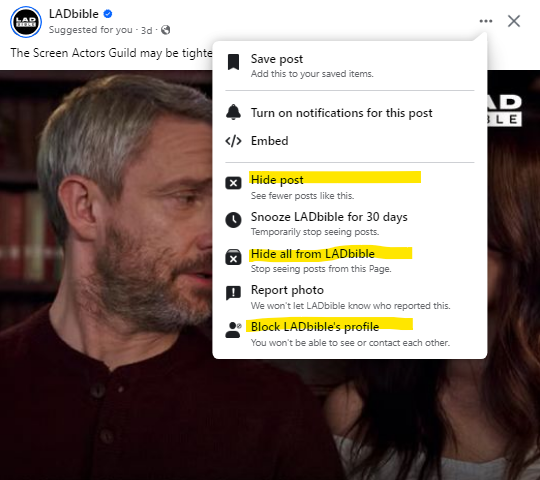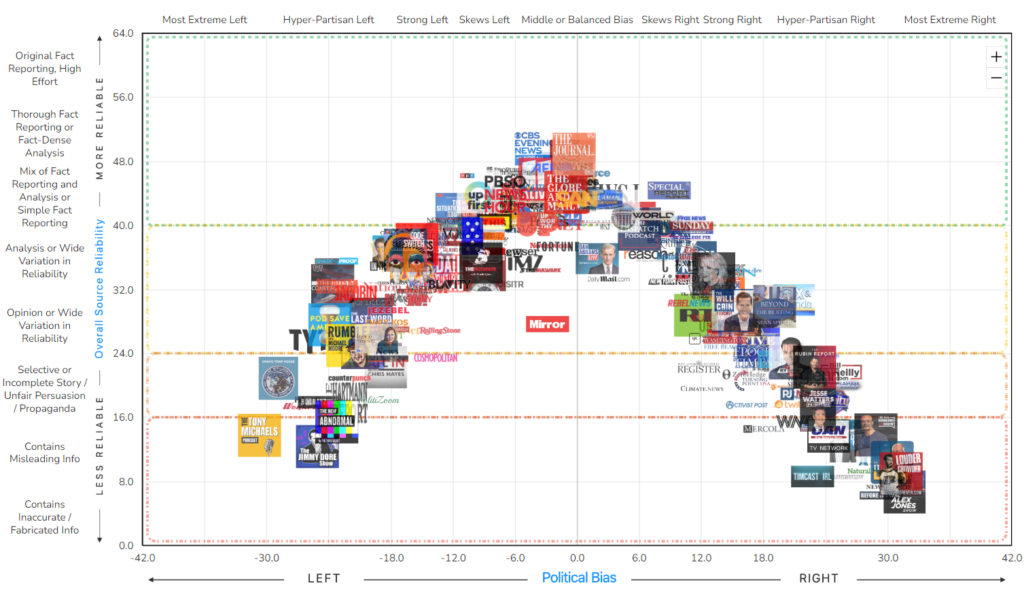Turning 39 – Reflections on Success, Travel, Generalism and Relationships
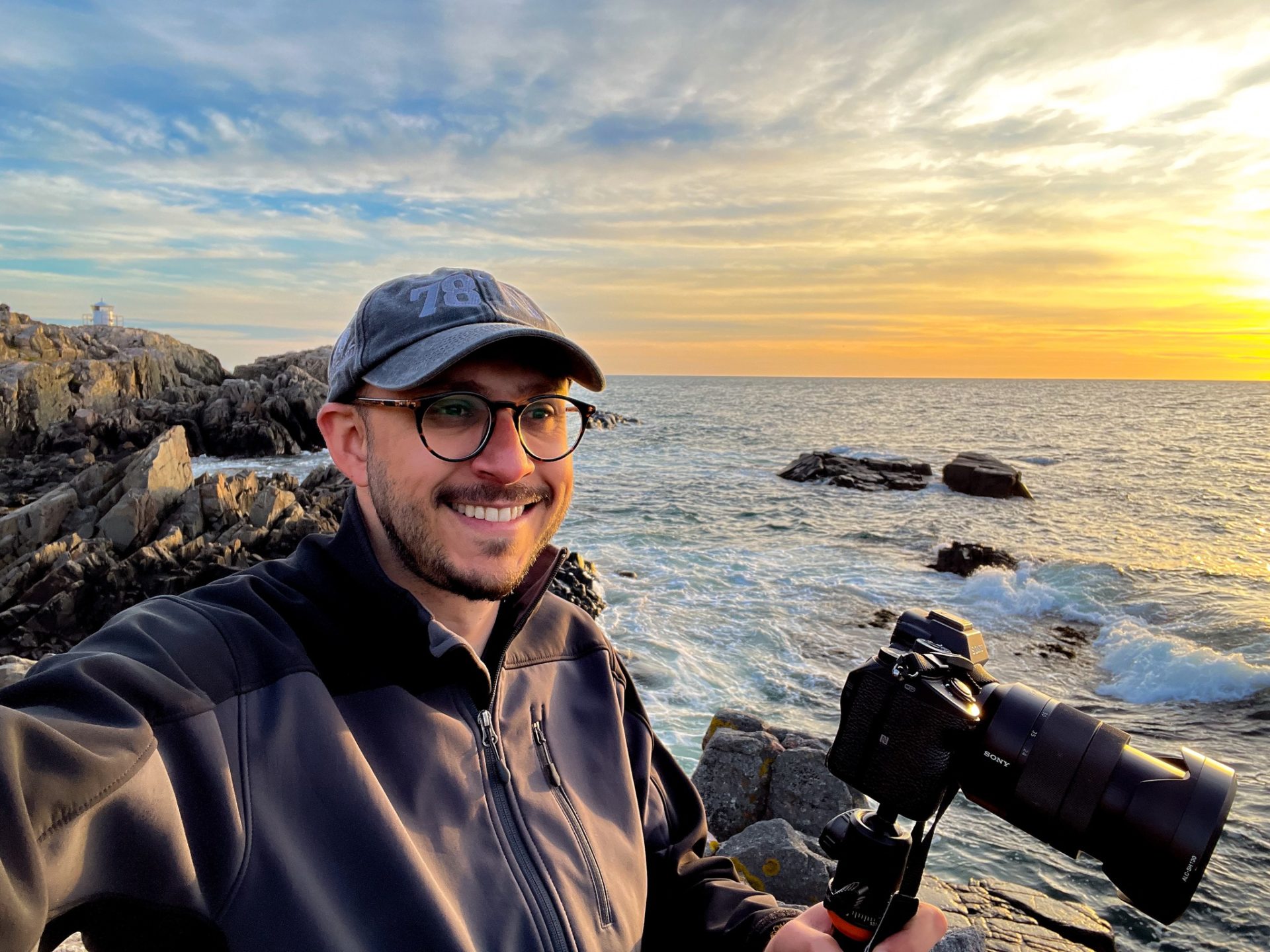
Wow, that year went by in a flash. As I now enter the last year of my 30s and speed toward the start of my 13th year in Denmark life is busy, but good. I find myself a little restless but mostly hungry for new ways to nurture my creativity. Balance remains a challenge, but one that comes from a focus on intentionality as I work to protect energy for spaces, activities, and people that bring joy and growth while letting go of old narratives, hobbies, and habits that I’ve outgrown.
In addition to this post, I had the chance to sit down and record a two-part interview earlier this year where I touched on a lot of reflections and shared additional insights. You’ll find them on the Perception Paradox podcast – Part I (Apple | Spotify) and Part II (Apple | Spotify).
So, what’s this post? As some of you have now come to anticipate – every year I publish a birthday reflection post. I hope you’ll enjoy these thoughts and take them for what they are – an attempt to share the world as I see it and how I relate to it. It’s a mixture of observations, musings, reflections, and advice. They’re extremely long and by all rights if I just broke them up into individual posts, I’d have more than 4 posts a year. But, this is the approach I’m sticking with and which actually gets pen-to-paper. Skip around, jump to what looks interesting, or take it from cover to cover. Your call =)
You can view my 38th birthday post here, 37th birthday post here, 36th birthday post here, 35th birthday post here, 34th birthday post here, 33rd birthday post here, 32nd birthday post here, 31st birthday post here, my more detailed 30th birthday post here, my musings on turning 29 here, or 28 here. As well as a long-forgotten blog post written on my 23rd birthday (wow, have I really been blogging that long?) which you can view here.
Topics:
- Reframing Museums: Does Where I Stand Matter?
- Photographers Inspiring Painters Inspiring Photographers
- A Fun Year of Playing with AI
- The Mixed Blessing Of Improving Your Craft
- Approach Your Social Feed Like A Garden
- Finding the Right Public Speaking Advice
- Former Soviet Might in Kazakhstan and Kyrgyzstan
- Dating, The Four Bs, and Reduced Tolerance for Bullshit
- Why Don’t We Take Sexual Assault As Seriously as Terrorism?
- Private Equity: Re-defining the Purpose of Jobs
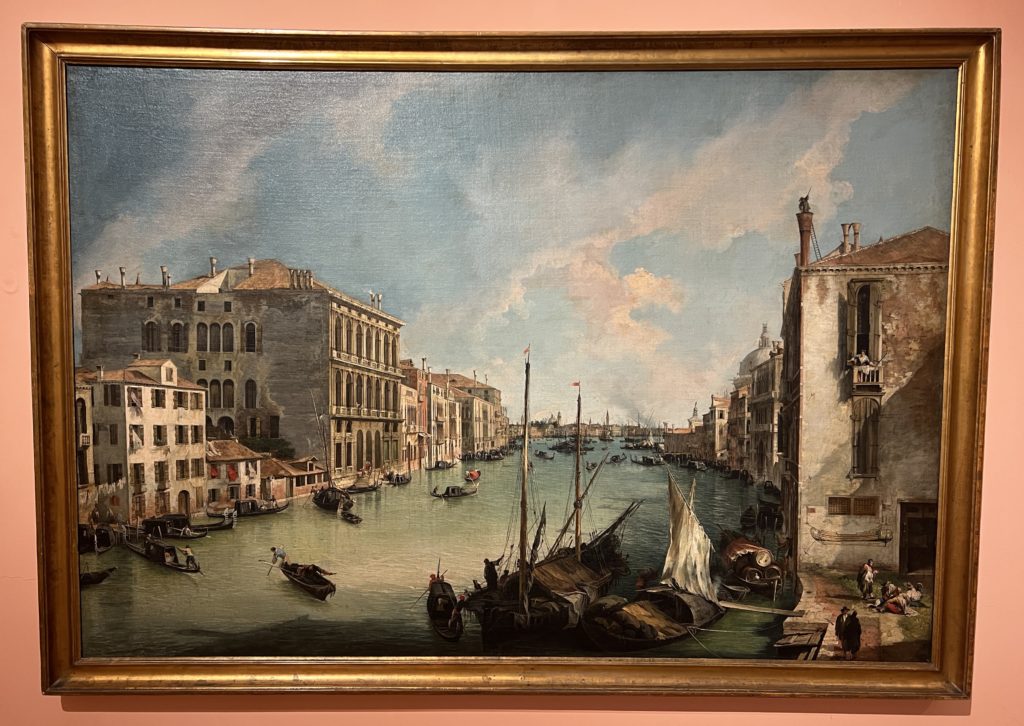
Reframing Museums: Does Where I Stand Matter?
I’ve always approached viewing paintings and wall-hung art in a somewhat uniform way. My unconscious assumption was that similar to a cinema screen, the ideal viewing distance was a few steps back and as centered on the work as possible. When folks talk about hanging art in residential or gallery settings – I’ve always thought of this in terms of the background it was against, the frame, and the light it was going to receive. Not so much how the art itself would be viewed.
There are a few exceptions to this, but I’ve always viewed these as very explicit and/or something clearly called out as part of the art. For me, the primary example of this was learning during a childhood visit about pointillism and just how different works like Seurat’s A Sunday Afternoon on the Island of La Grande Jatte look when you’re up close vs. standing some distance away and/or Europe’s grand painted ceilings with their intentional play with perspective and distortion.
A trip this year to the Thyssen Museum in Madrid and random eavesdropped insight changed this for me. As I stood taking in a lovely work depicting Venice’s canals, two individuals walked up – it quickly became clear it was a tourist and a private guide. As they paused by the work, my ear turned to their conversation and snagged my curiosity. She mentioned she felt the piece was hung wrong. Then had him maneuver to a few different spots. The final of which was a few steps back and to the left side of the work. He reacted immediately. My interest was further piqued.
As they continued on, I revisited the painting. This time paying close attention to how the painting changed as I squatted slightly, stood tall, stepped to the left and right sides, and stepped back. To other visitors, I’m sure I looked a bit like some sort of bird doing a mating dance. But, sure enough – the differences were subtle but significant.
I spent the remainder of the visit taking in the art and moving through the space with fresh eyes.
Which also got me thinking. A camera will always make a photo with the photo fully centered. As a photographer, I often stand directly behind my tripod. But, your typical painter moves all around their canvas and would often have a slight orientational bias depending on if they’re left or right-handed. Why wouldn’t this naturally evolve and shape the ideal perspective for the final result and how/where it’s best viewed from?
And then, of course, there is the craft and nuance of the art itself. The painter’s own intentional shaping of the piece, the artistry of their ability to bring perspective to a 2D surface, and how that depth comes to life.
That same trip included a visit to the Spanish portrait and landscape painter Joaquin Sorolla’s house/museum. It served as the perfect opportunity to further test and explore my fresh approach to taking in painted works. And, sure enough – there were pieces, that took on an entirely new sense of depth, personality, and perspective when I moved myself around the art.
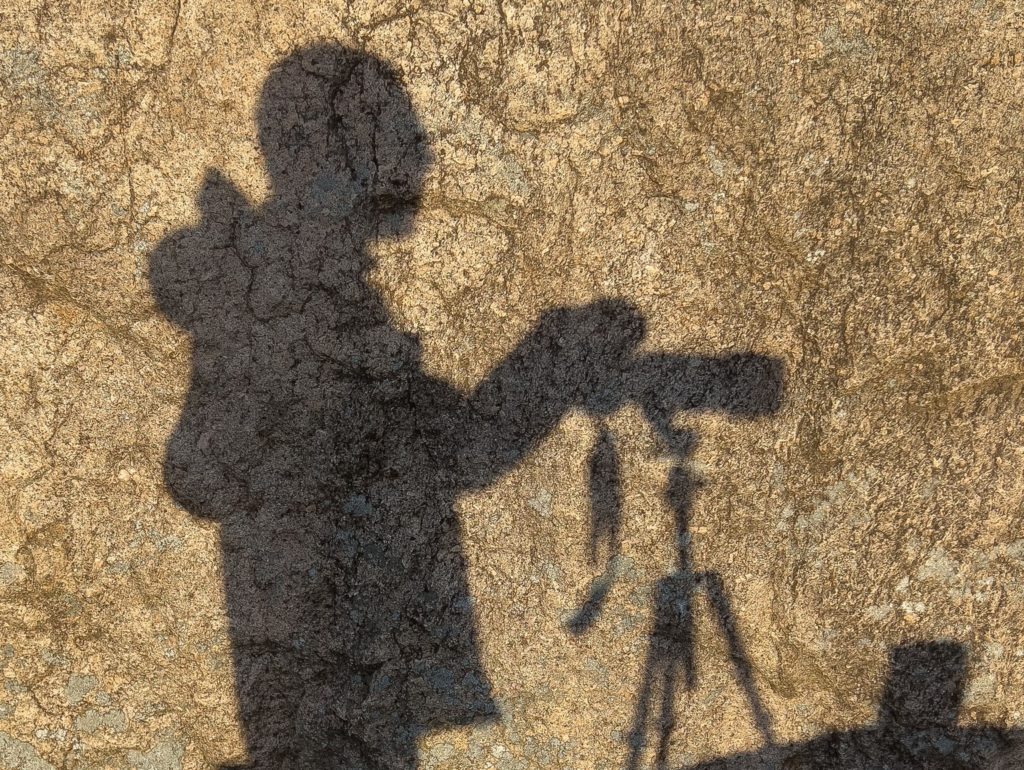
Photographers Inspiring Painters Inspiring Photographers
This year’s visit to the Sorolla Museum in Madrid offered up an additional opportunity for inspiration and reflection. The museum – set in Sorolla’s old mansion, is a gorgeous museum that brings a lovely insight into both the artist and the art. Though I recognized two or three of his works, I had no idea they were his, and knew nothing about him going into the tour.
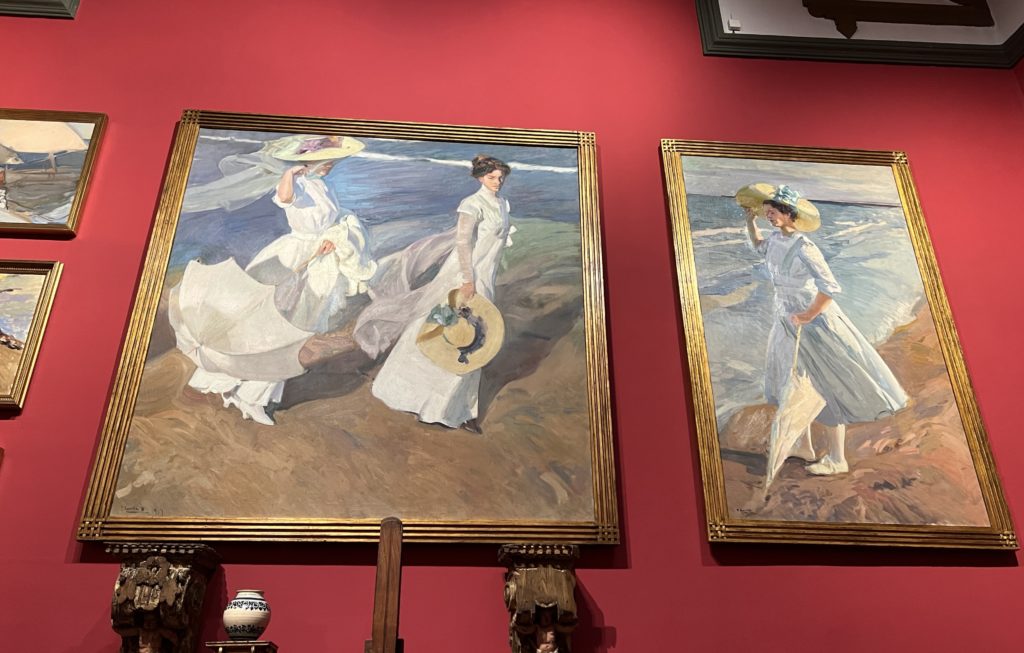
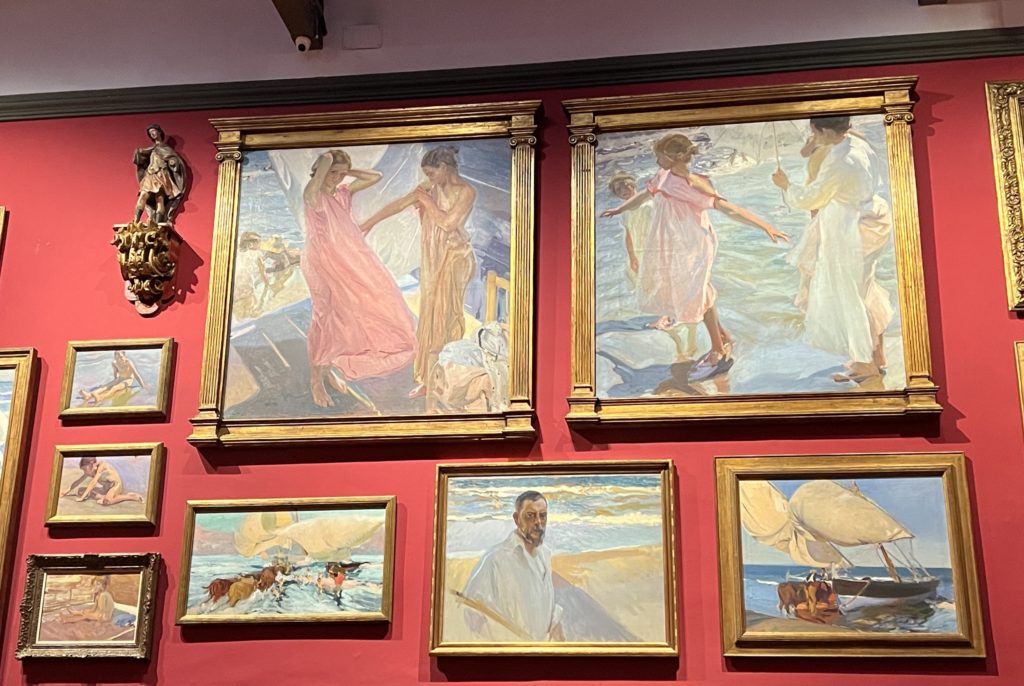
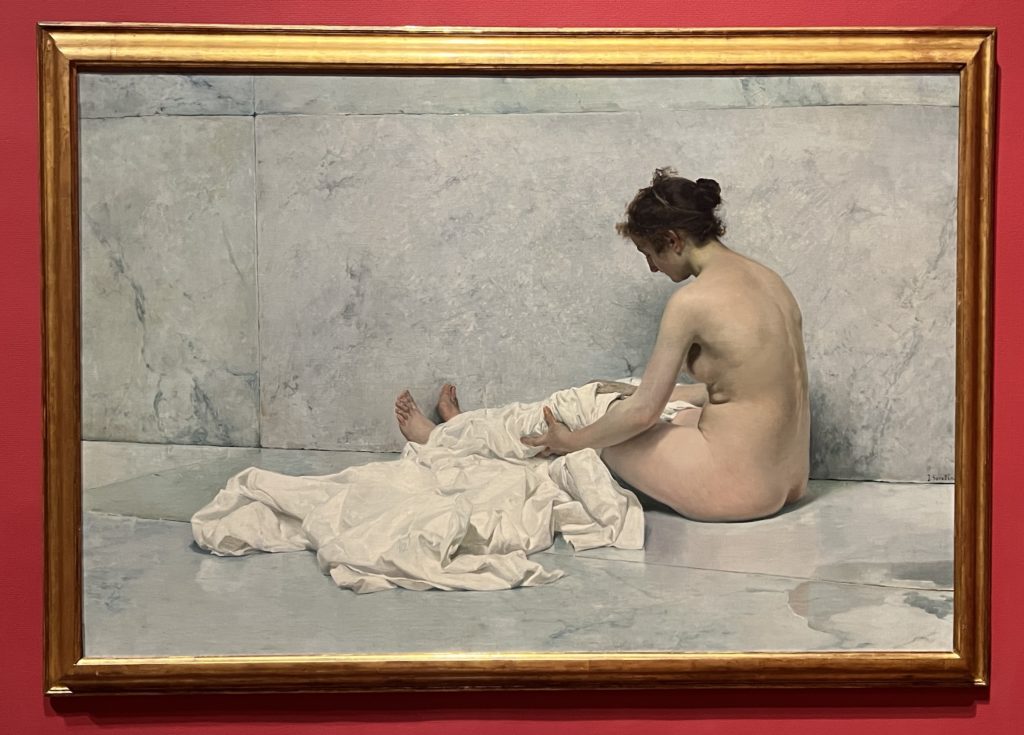
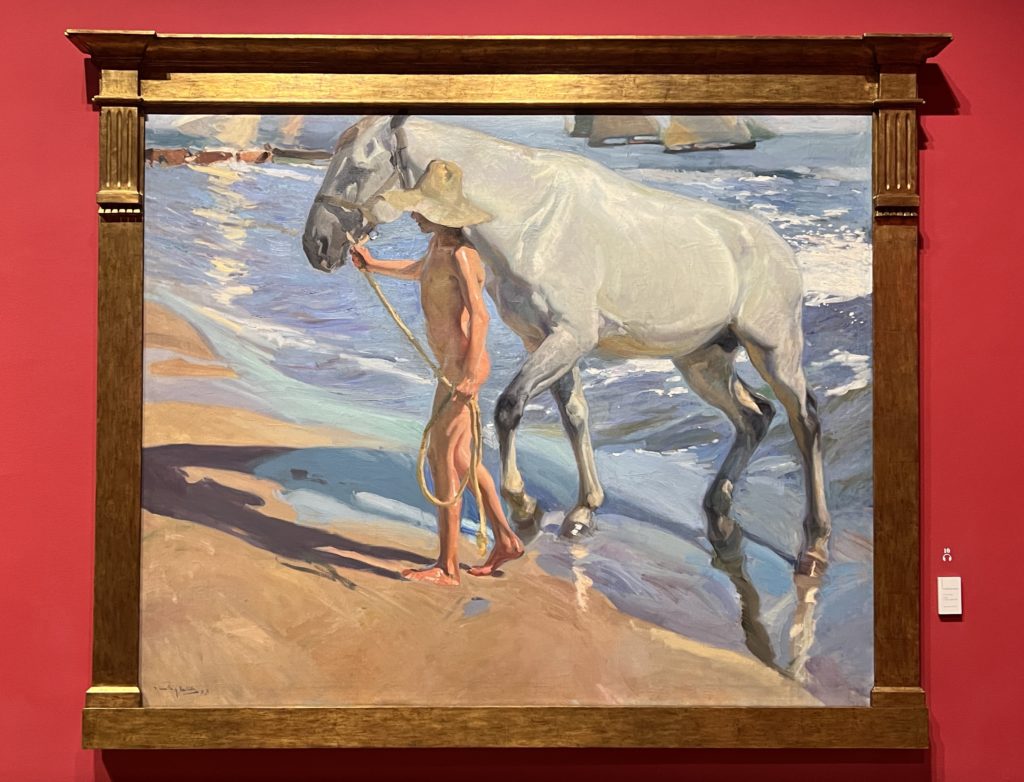
But, as we walked through the museum taking in many of his open-air beach portraits I was quite taken by his framing. It felt….unusual, particularly for a painter. In fact, the compositions felt much more photographic due to the way fabric, feet, and items flow out of frame and the way the perspective in these works also often comes from above.
Luckily, here, again, the guide brought immediate clarity. Sorolla (1863-1923), it turned out, was married to the daughter of Antonio Garcia Peris (1841-1918) – a photographer. This relationship and Sorolla’s adaptation of a more “photographic” approach to framing and perspective led to a completely different look and feel in his work. As a photographer, this disruption of the normal flow of inspiration caught my attention and spiked my interest. After all – as landscape photographers, we often look to painted classics for inspiration. But, as practitioners of the “younger” medium, it feels far less common. True, many painters will paint from a reference photo – but this is, in my experience at least, more out of convenience than deep inspiration that formatively changes and influences the final output.


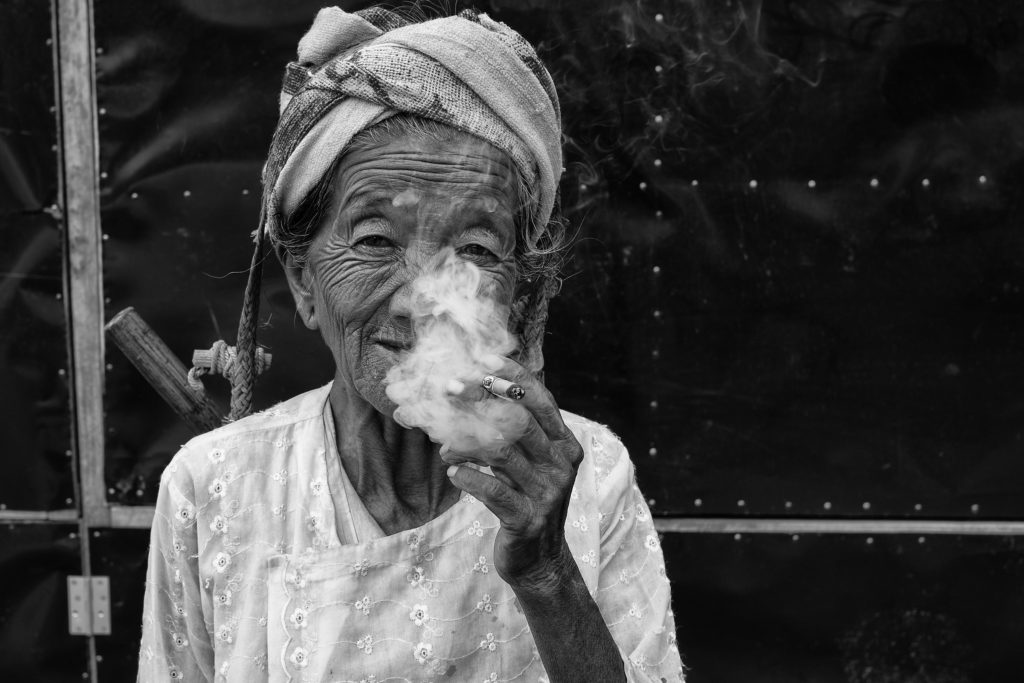

All of which has served to help me add one more turn of the wheel to things, and further incorporate the combined insights of both into my own work. By seeing these photographic techniques applied in a painted context, the power of framing, light, and perspective was really driven home. It also inspired me to revisit the way I frame my natural landscapes and consider drawing on dynamic portrait techniques.
What do I mean by that? In essence, the assumption with a standard portrait is that you should have a plain background, be oriented fairly straight on, have lots of space around the individual, and a clean frame. But, this approach tends to create sterile and boring portraits that don’t tell much of a story and make you feel distant from the focus of the photo – they can very quickly become mugshot-ish. The solution to this is to get much closer and stop worrying about having everything “in frame”. In practice, a lot of really compelling portraits of humans and animals alike get tight, and play with what’s out of frame, as much as what’s in it.
My photography took a major step forward when I started to realize this and apply it to my portrait work. But, seeing Sorolla’s work really got me thinking about it all over again and with much more intentionality. More than that, it got the gears moving on how to apply these same insights to my landscapes.
Where does the conventional wisdom of having clean edges and breathing room for your primary work, and where does it actually create beautiful but sterile or boring landscape photos? How can I delve more into the space between grand vista landscape photography and super close tight intimate landscapes while unlocking more of that sense of motion, space, and moment.
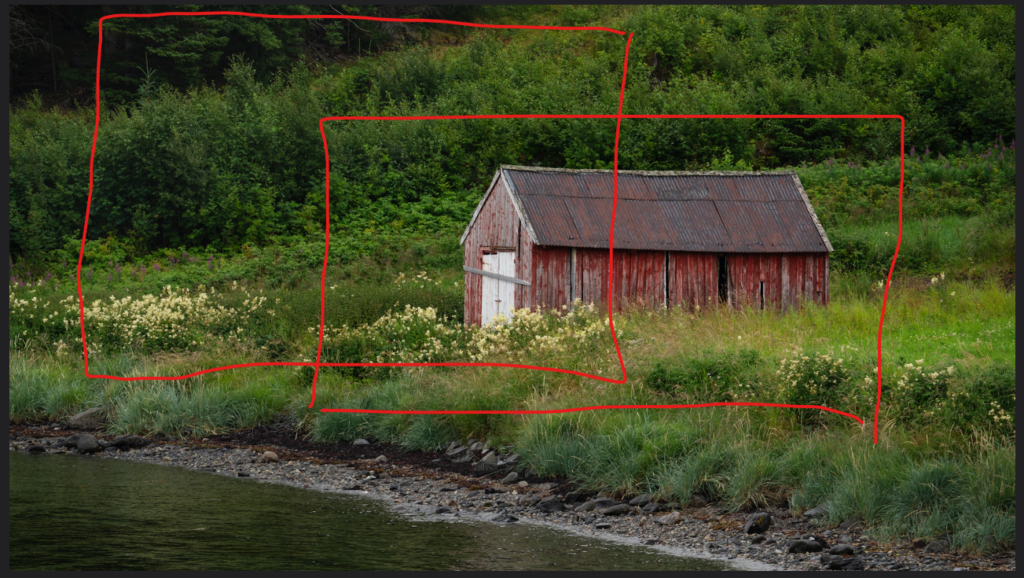
In the example above, I’ve taken a photo of a Norwegian Boathouse as I photographed and then edited the final image. In revisiting the photo, I’ve quickly sketched totally different crops that would apply some of these insights. As you can see in the current image, there’s a ton of breathing room around the edges to make it clean. The focus with the boat shed is clearly in the image, and I’ve focused more on the line of the water, and the line of the shrubs to create a sense of balance in the image. But, I could also explore very different crops that would tell completely different stories.
The challenge now? To put it into practice when I get out and photograph. To experiment, to re-frame how I approach my compositions, and to experiment with new ways to approach my editing process. I suppose these two Museum experiences also mean I’ll need to update my approach of just free-form walking through art museums without a tour, guide, or agenda as in both cases I walked away with meaningful insights I’d have totally missed if I was following my usual solo-approach.
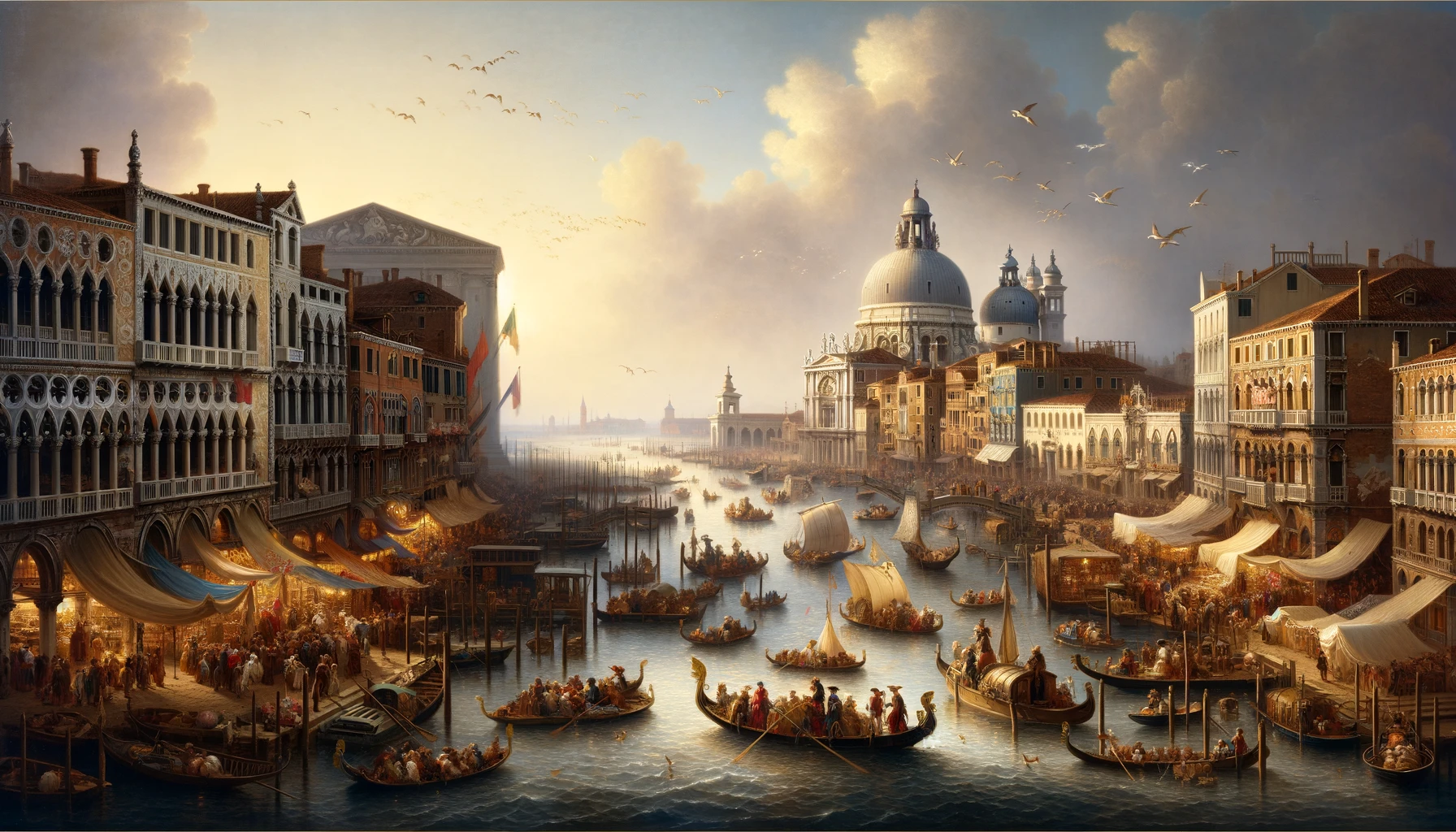
A Fun Year of Playing with AI
While I have deep reservations about the way AI model training has steamrolled and exploited creators, the tools themselves remain a fascinating new tapestry for experimentation. Now that the novelty has started to wear off, it’s a fun period to play and chase a mixture of highly utilitarian and highly creative ways to use the technology.
I’m definitely already quite tired of the generic AI look and feel. It’s quite easy to recognize ChatGPT-written text for social posts or generic content. There’s a sameness to it – where without intentional modification and a critical eye, the output takes on a….what should we even call it? ChatGPT dialect and accent? And then there’s the artwork. The more I play with it, the more I struggle to get it to break free of that slightly glossy, slightly blurry, hints of an over-saturated cartoon look and feel.
AI Search
I’m loving Perplexity.AI for search and quick data checking. In some ways, it reminds me of search before SEO and the ensuing enshittification of search results made finding meaningful responses almost impossible.
Research and Synthesis
I’m increasingly enjoying playing with ChatGPT and various GPTs for research and prototyping. This year I used it to search for and experiment with fleshing out a hypothesis I have that explains conspiracy thinking and behavior through the lens of the same risk/reward/justification pathways that are engaged by gambling. While due to the risk of hallucinations, I needed to exercise a lot of care – I was able to use GPTs like ScholarAI to help digest and narrow in on interesting citations as well as to explore some basic questions very effectively across a wide range of papers.
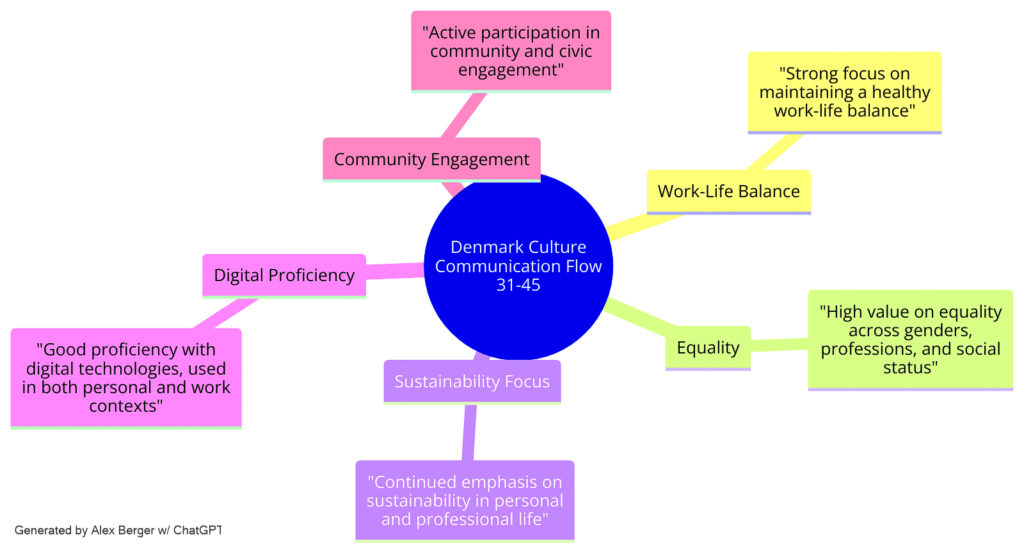
I also recently used it to generate a series of cultural traits and then map those into mindmaps. You can see the end result in my recent post “Cultural Traits Explored Through the AI Lens”. In total, the generation of the 20+ mindmaps took under 30 minutes. The visuals themselves are fully generated through a mapping GPT extension and then it was simply a matter of outlining my basic criteria and refining it.
I’ve also absolutely loved using ChatGPT as a dictionary/thesaurus/proverb assistant. The ability to prompt it to confirm effective grammatical structure or word choice is brilliant. A prime example might be something like Affect vs. Effect. A quick prompt I might ask then often looks something like “Please define the difference in usage between Affect and Effect and provide 2 examples in bulleted form. Then please analyze the following sentence and confirm which is the appropriate usage. “The dog’s bad breath had a profound affect on my appetite, causing me to pass her the remaining food on my plate.”
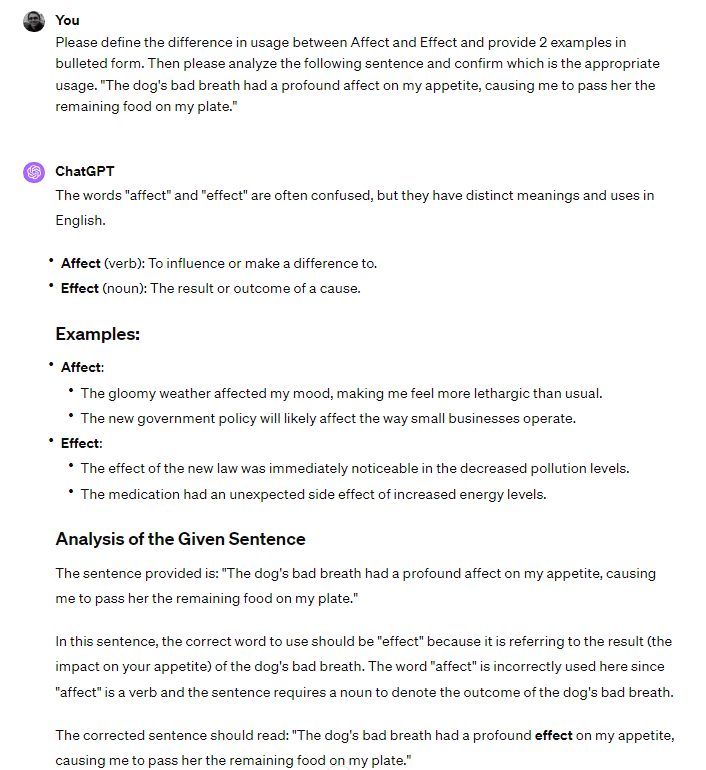
It’s a great tool, especially when I get various questions from international friends and colleagues around usage and want to confirm my intuition. After 12 years of living abroad, it’s also an excellent tool for dusting a bit of rust off my English.
Visual Art
The area I’m having the most fun in is definitely playing with creative ways to generate visual art. While I’m utterly disinterested in the use of AI to manipulate photography – I’m loving layering prompts with my travel knowledge and historical curiosity to create new generations.



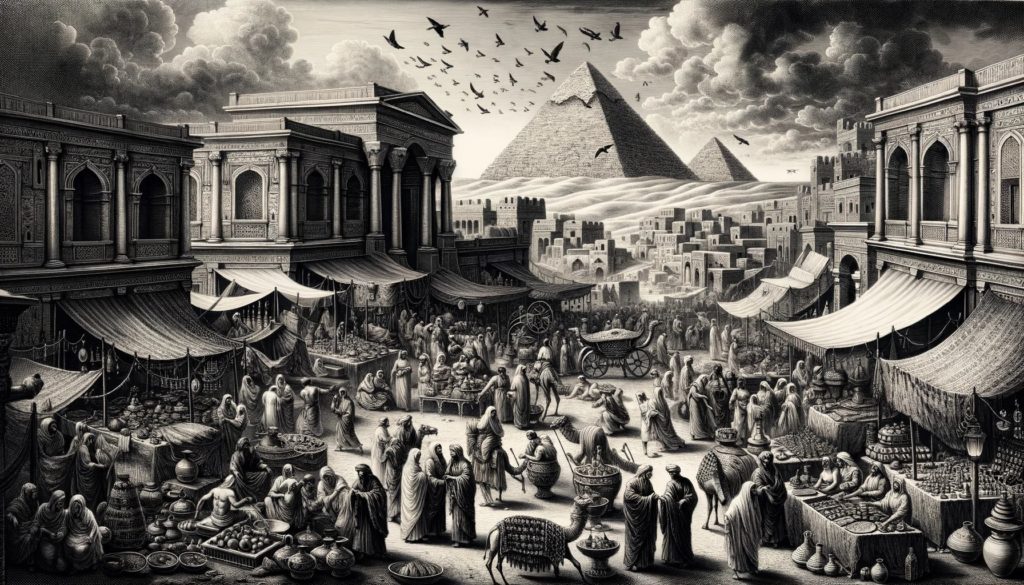
Earlier this year I generated a series of pieces that focused on my continuing passion and curiosity surrounding etchings. For each, I leveraged prompts using artists I deeply admire such as Giovanni Battista Piranesi and Luigi Rossini, and then layered on fusions of natural landscape formations and archeological sites to generate a series of novel creations. You can see the full post here.
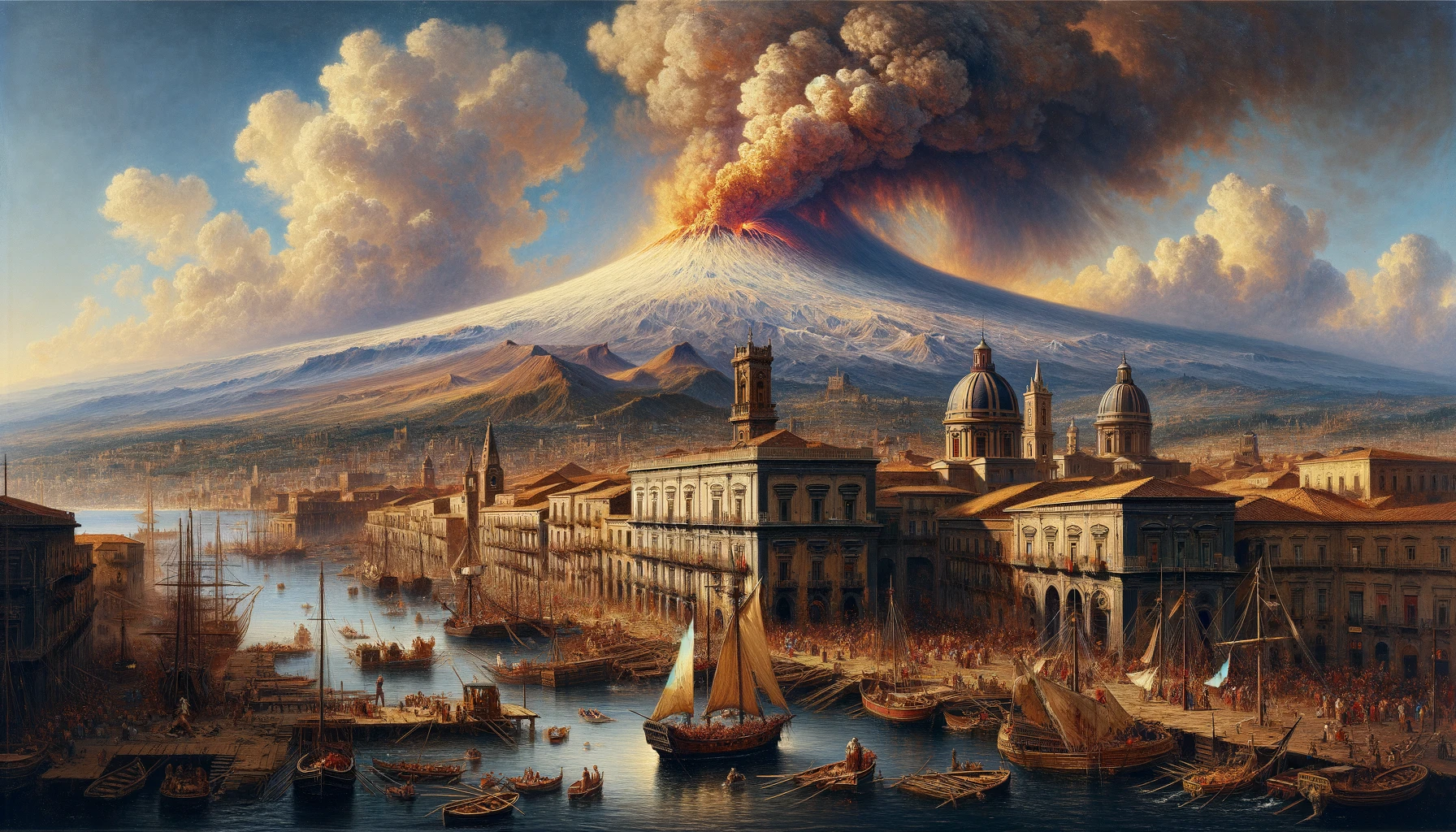

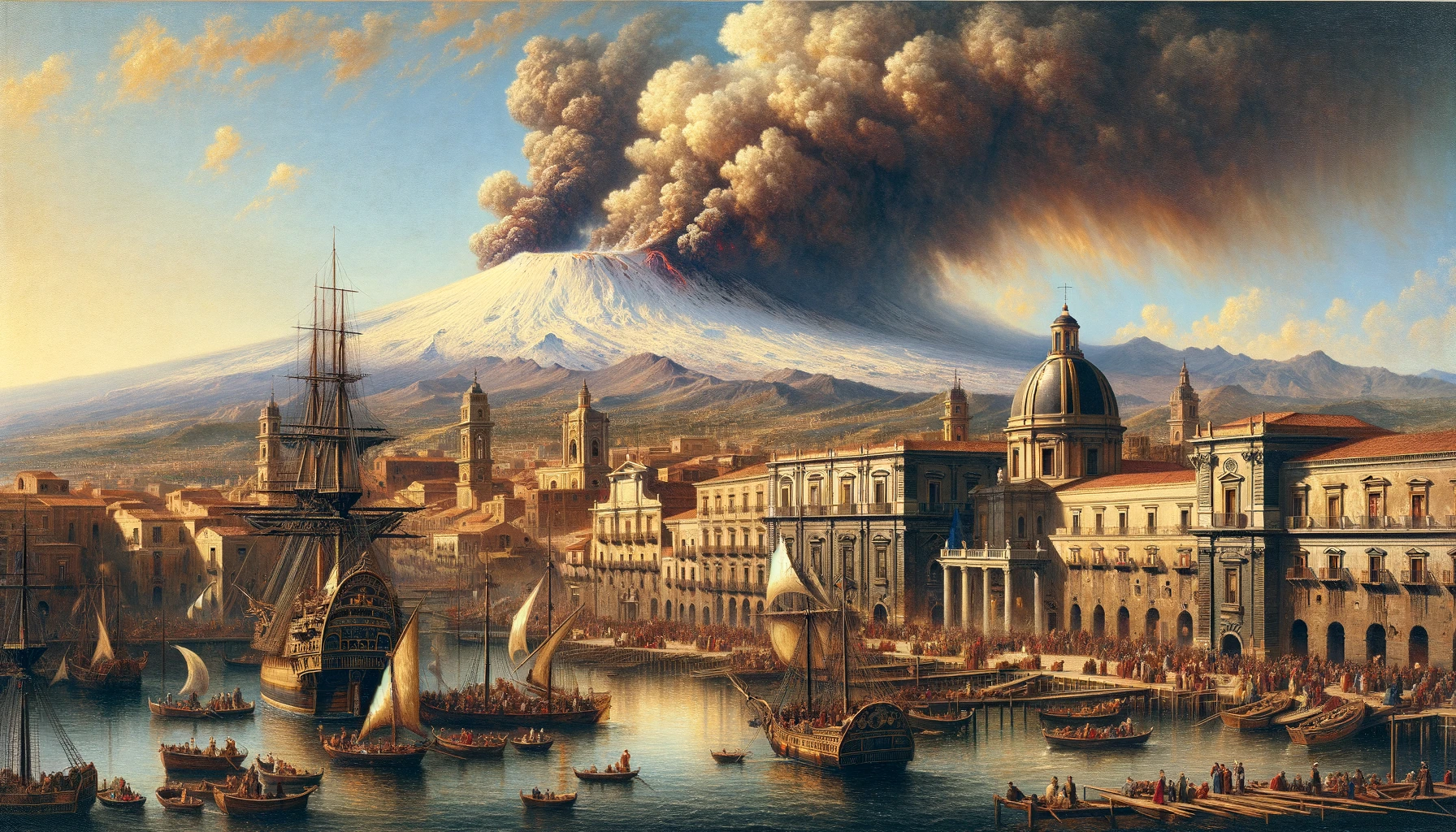
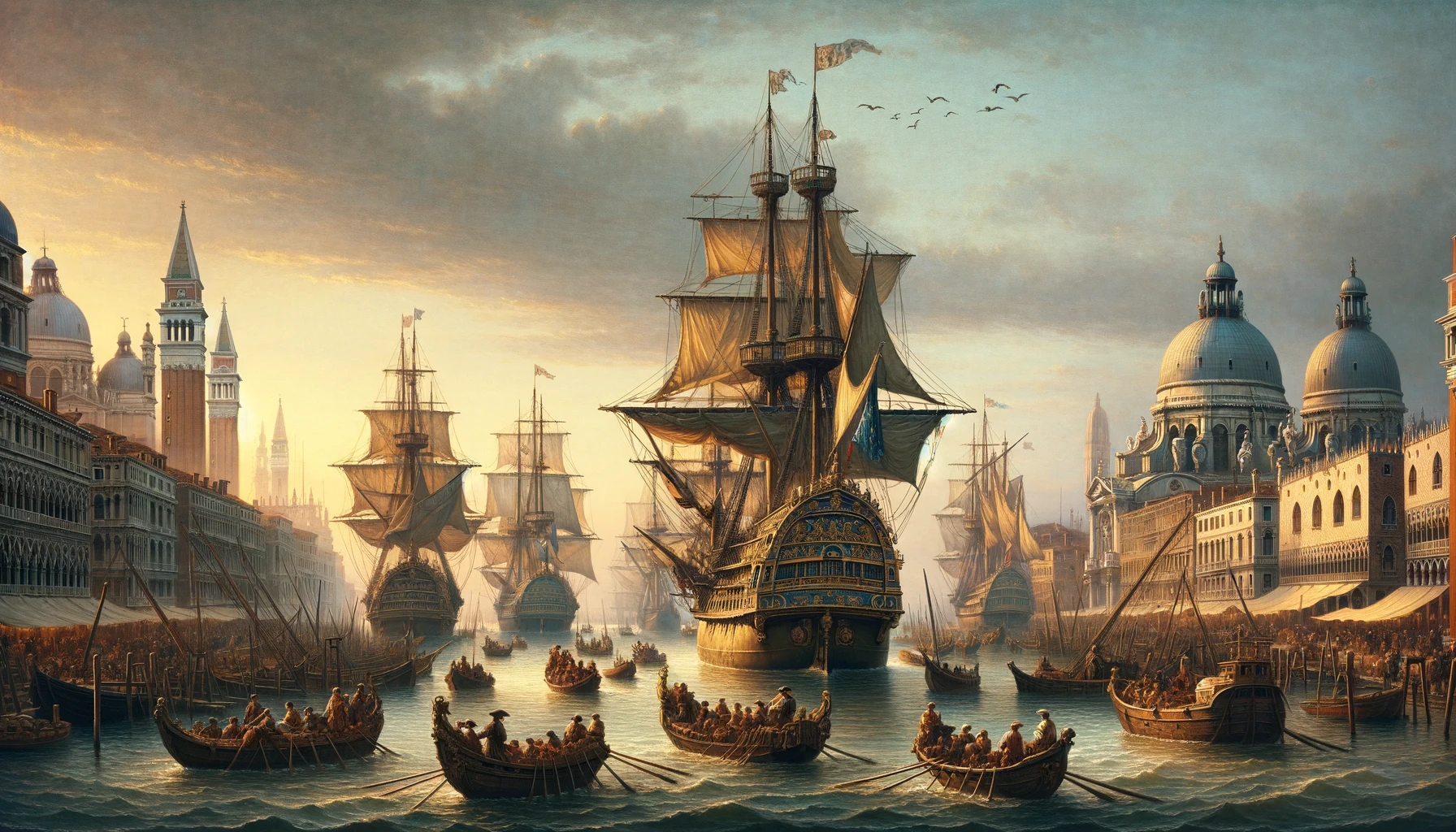
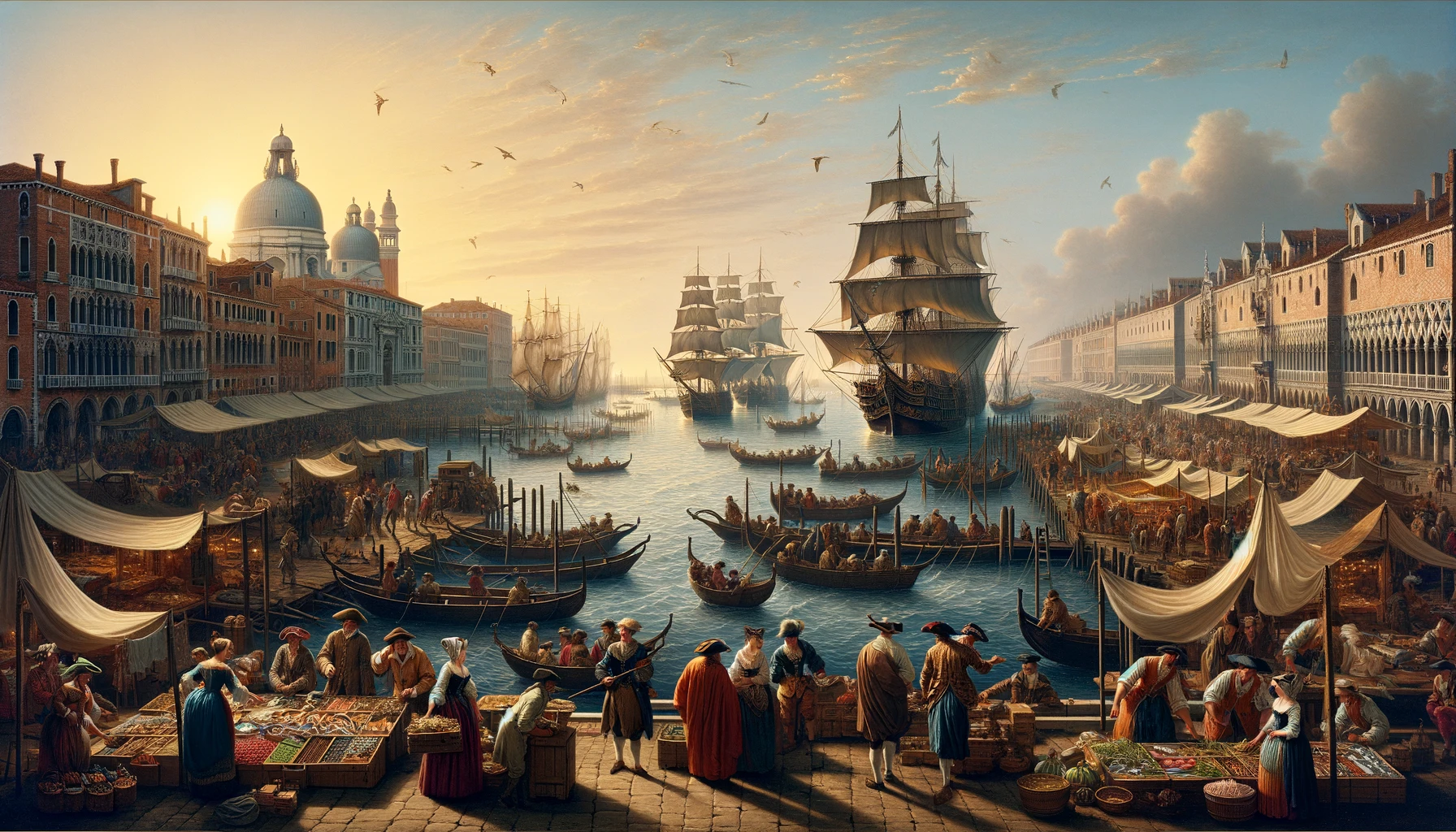
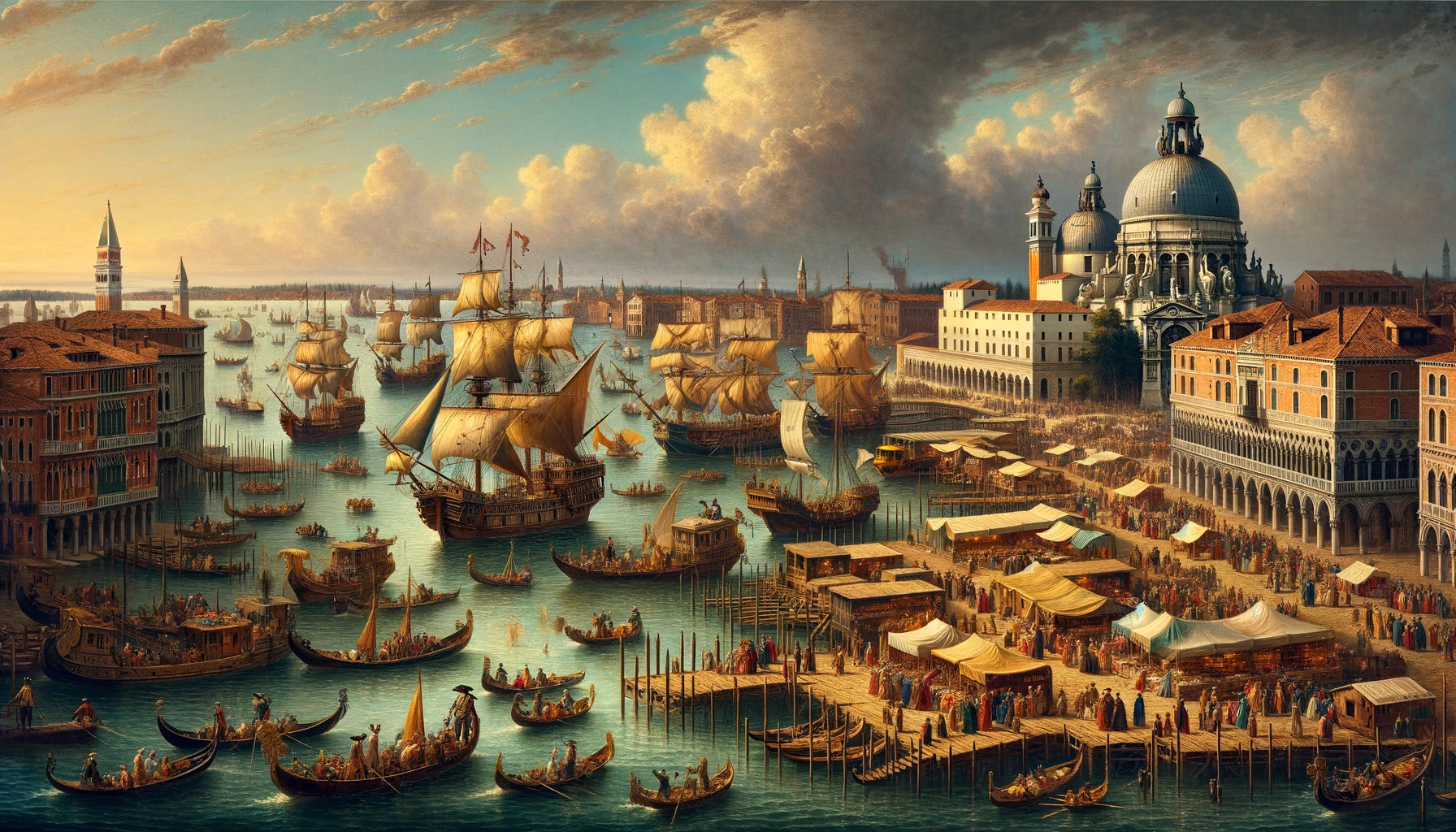
More recently I experimented with time periods and painterly styles, fusing those with locations and events. Here there’s a blend of styles from the 1500s to 1800s paired with depictions of Sicily and Venice.
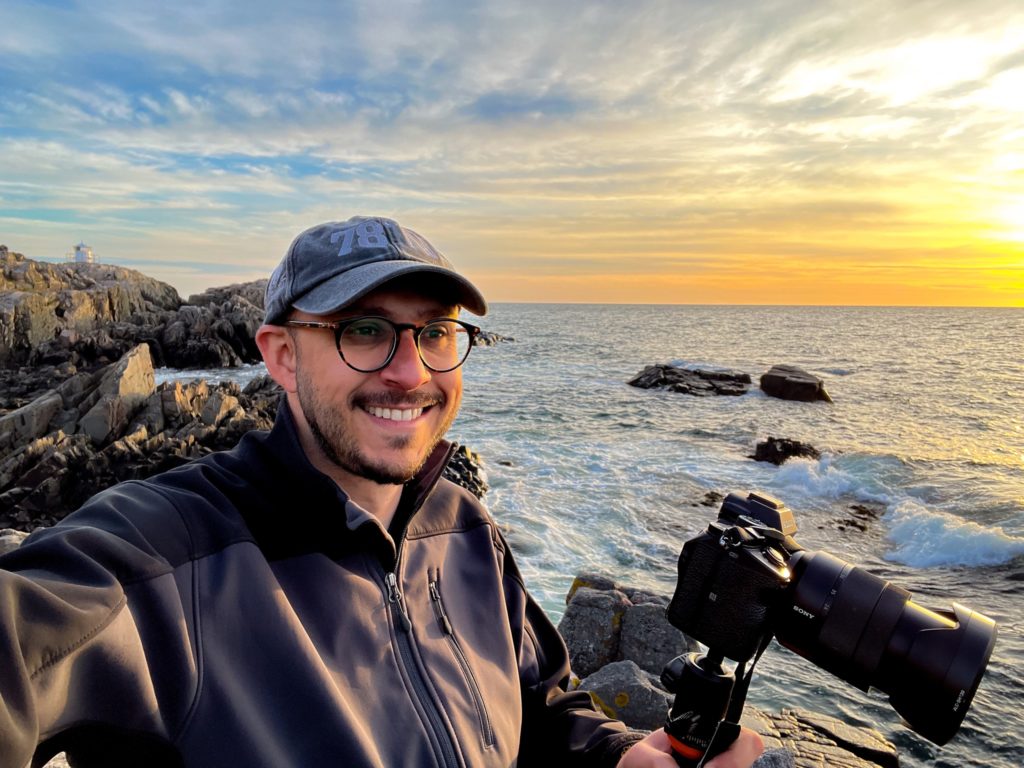
The Mixed Blessing Of Improving Your Craft
Having a craft is as rewarding as it is exhausting. With both my photography and my writing I find there’s an interesting challenge that’s at least partially tied to Imposter Syndrome, but retains its own unique twist.
With crafts like writing and photography, there’s always an infinite opportunity to improve. Not only that, but each new work has its own unique potential to be incredible and stand the test of time, or to fumble and miss the mark.
I find the interesting quandary with creating – is each new major step forward is seen through the eyes of your knowledge and ability and emotional connection to that work at that point in time. With photography this is especially challenging, as not only is the technology rapidly evolving, but the way I see, experience, and recall an image and composition is also progressing. It’s almost like watching an image come into focus during an optometrist visit. The image seems quite in focus to begin with…if perhaps a bit blurry. But then, as you refine the lenses closer and closer to the ideal calibration – it gets sharper and sharper until you suddenly realize that your initial view was anything but perfect.
This is the joy of the craft, and far from a bad thing. But, it is a deeply frustrating thing.
When I look back and re-read something I’ve written, or look at images that I thought, at the time, were world-class images – I often find myself scratching my head. Recognizing the pleasant emotion attached to the work, but also feeling a bit surprised and disappointed – sometimes on the edge of embarrassment. For many artists, there’s a temptation to internalize this criticality or to delete and prune those older works. And while I’ll occasionally do a light cleanup, I focus more on learning, on celebrating my own journey, and appreciating that those pieces may still resonate with other people and are often experienced in very different ways.
It’s also a powerful reminder when you re-frame of your growth and journey and improvement. All of this is one of the reasons you’ll still find writing on this blog from 15 years ago, and why I have Flickr photo albums that include nearly 28,000 images going back to 2004 on my flcikr.
Because an artist’s criticality is never fully coherent. I find there’s another simultaneous voice that inhabits the same space. And that’s the voice that looks back at stand-out works that have withstood the test of time. With these, the challenge is almost the opposite. I look at my current body of work and I grow frustrated. Then I re-read old writing or look at stand-out images from past years and that frustration and imposter syndrome grows. The voice starts up again – “ahh but look, you were so good. What happened? You must have just been lucky. Or perhaps your skill has deteriorated because you’ve neglected it or lost the passion that drove you.” Which is, of course, nonsense and a silly version of the honeymoon effect.
Those stand-out or award-winning examples were the very best of that year’s work. They often also reflect stand-out experiences, either in the form of a profoundly unique trip, or a moment of growth and reflection or inspiration. They’re the works that are cherry-picked, pulled free of context, and then held up and judged side-by-side with others that may reflect experimentation, still need further refinement, or which are already exceptional in their own right but which just don’t quite break through the current haze of perfectionist insecurity.
Now, I constantly remind myself – that these are part of the journey. That they are a blessing if I choose to welcome and relish them and that they’re also the mixed blessing of pursuing a craft. They’re part of the journey, and with each passing year they take on new meaning, new context, and help remind me of important moments, emotions, and steps along the way.
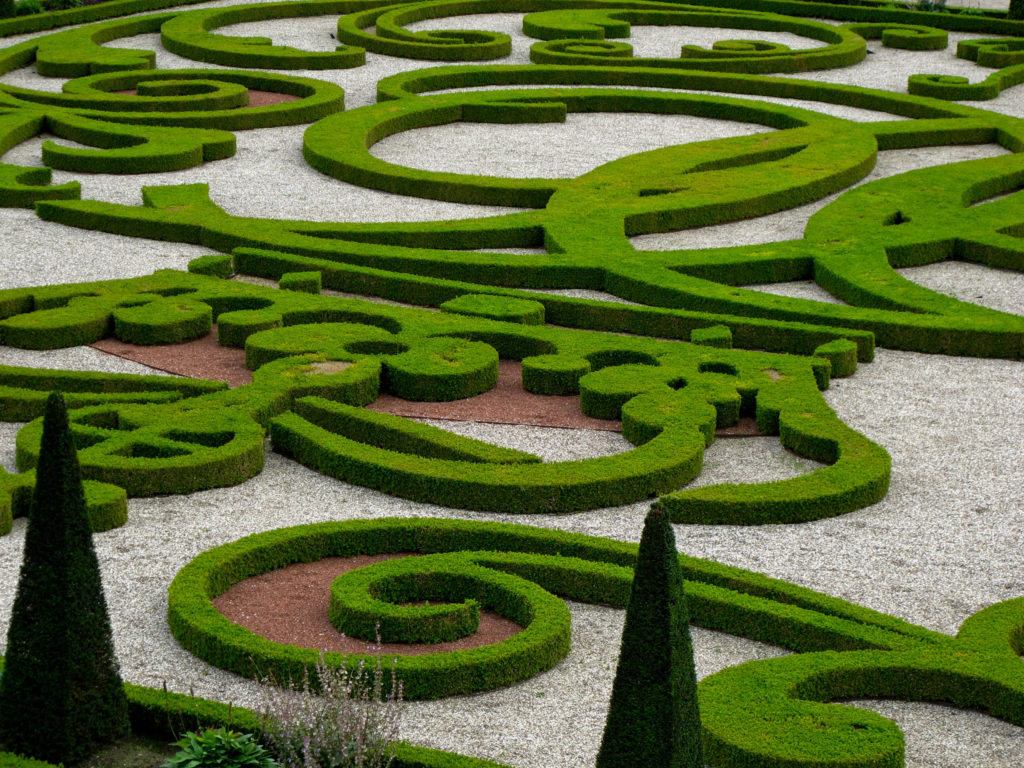
Approach Your Social Feed Like A Garden
If you want to radically improve your social literacy and safeguard yourself from falling victim to some of social media’s most problematic pitfalls there’s a simple, but highly effective change in approach you can follow.
Re-frame and think about every feed-based social platform you engage with as a mini garden. Right now, you probably open it up, picked a few things you like, and then you engage with what it shows you in a constant stream of content. In earlier stages of social media, that feed was shaped predominantly by who you chose to follow. But, as that intentional step was replaced by suggestions and a dynamic feed who you follow is just a single data point. How’s this map to a garden?
Think of your social feed on a platform as a garden bed. You have a clear idea of what you want – some carrots, some tomatoes, some beets, some peas, and maybe some spices. But if you don’t maintain that bed, groom it, water it correctly, and pull weeds in fairly short order you’ll be growing lots of weeds, very few of the plants you actually wanted, and likely those weeds will overpower and kill most of the plants you actually want the garden for. Similarly, if you – let’s say – let that tomato plant grow wild and give it total free reign, too much of a good thing is likely to also create issues.
On a social feed, the algorithm is looking at your profile, looking at the whole/what you follow, and then watching what you engage with, how long you engage with it, and how that impacts your behavior. The good news is, like a garden, you can be very intentional and work to prune, water, and weed that garden to keep it healthy. The bad news is, it’s a constant process, and a bit like very persistent weeds, the algo will sometimes very aggressively push certain content based on certain signals.
So, what does good gardening actually look like?
- Every link you click, video you view for longer than 1 second, search you do, comment or like, and profile you click into registers as an engagement. Keep this in mind while you consume content. Use it to positively shape good behavior, and be careful with potential bad behavior.
- When people send you content or links, be mindful that bringing that content into your social garden has an impact. It’s like transplanting in a new plant. It may be great, it may be harmless, or it could come with snails and need weeds.
- Don’t be afraid to block or hide accounts. Each platform has a different set of tools. And unfortunately, sometimes it takes a while to force the algo to respect those choices. The way algos usually work also means that they’ll often wait a few days and then show you some of that content again – just in case.
- Block and hide accounts you know are full of bad information or toxic/unhealthy advice proactively. Historically, going and hiding content or blocking a user felt like a very aggressive act. But that’s because they were friends already in your network. I love history, archeology, and the rapidly evolving nature of the field – but I know Graham Hancock is a dipshit that spouts constant nonsense and misinformation and that what he presents can’t be trusted. Blocking him proactively helps keep my feed focused on real LIDAR discoveries and educational pieces, not nonsense and fabrications.
- Do a mental audit of what sort of content your algo is feeding you. I LOVE cat, dog, and panda videos. I HATE legless slithering reptiles. I’m very intentional in getting the algo to respect this and it’s effective. For political and social content or news, I also use tools like the AdFontesMedia bias and accuracy chart (here) for framing. In general, if you find yourself spending much time with content from under 32 – your garden has sick plants. And if your garden has lots from under 24 – it is more weeds than a garden.
- Keep in mind that weeds propagate. So, when you’re engaging with content from a specific content creator, producer, or narrative – you’re not only watering that specific video/producer. You’re essentially taking a handful of related seed and throwing it around the garden.
- Watch for aggregators or re-post accounts, and then be very intentional in if/how/when you engage with them. These types of accounts are purely focused on engagement, often steal content, and have a high confirmation bias.
- At times, it’s also important to hide/block accounts posting content you may agree with, but which isn’t credible or is chronically extremely biased. This applies more to news and commentary, but can also fit self-help and related genres. It’s probably less of an issue with cat videos.
Of course, what you don’t want to do is just create a dysfunctional echo-chamber the only has stories and content that re-affirms a very narrow view. But, the reality is, that’s what the algo will push you into subconsciously if you don’t approach it with intention. By taking this approach and being intentional, you can get the most value out of social platforms while using them in a more healthy, more media-literate, way that’s better for your mental health and keeps you more in the fact-based side of social.
This applies to all major social platforms; Facebook, TikTok, Instagram, Threads, X, BlueSky, etc.

Finding the Right Public Speaking Advice
By now you’ve probably seen the videos and articles about some people having an inner voice, some people having an occasional inner voice, and others having a fairly constant one. For those who haven’t stumbled onto this yet, it’s a fascinating insight. Simply put, some of us essentially intuit and “feel” actions and emotions and thoughts, while others have an added layer of abstraction which includes a running conversation similar to the voice-over you’d find in films.
While this, on its own, is quite interesting – a recent conversation gave me an exciting new insight into how this was causing a disconnect in the advice I was getting around facing my fears, anxieties, and physiological reactions to public speaking.
During a recent chat with a friend, we were discussing a talk she had to give, but was extremely anxious about. I was sharing some of the insights I’ve learned and used to help address some of my own issues stemming from general social anxiety and the issues the undiagnosed sugar intolerance I’ve talked about in previous posts caused. But, what became clear to me when she described a lot of the fears, challenges, and frustration loops she falls into, was that she has a very strong internal monologue. And that’s when it clicked.
It’s probably no surprise to many of you that I also have a strong internal monologue. And, looking back across previous posts and in Practical Curiosity, I actually have talked about aspects tangential to that monologue and how it shapes our behavior in a variety of ways. As she and I talked, the epiphany hit me like a rock.
A huge amount of the advice, suggestions, and reassurance that people have given me around public speaking and social apprehension over the years is enormously well-intentioned but largely useless. It can actually be quite frustrating because it’s usually very clear that they’re not understanding a large part of the source of that apprehension. It’s a bit like two cars driving side by side, talking about the weather. Only it’s raining, one is a convertible with the top stuck down, and the other is a sedan that doesn’t recognize that the convertible is different. You both started in the same place, you’re ending in the same place, you may be a great driver. But, one of you is soaking wet, freezing, and trying to solve a problem entirely outside the wider conversation of how to drive from point A to point B.
And that’s where I suspect the internal monologue comes in.
When I’m giving a speech, I’m not just presenting. I’m simultaneously having an entire internal conversation with myself in real time as I do it. It’s like being an actor, and then in your earpiece you have your stage director shouting feedback. “Don’t forget to breathe, Look up, smile, make eye contact. You’re not making eye contact enough. Your voice sounds like it’s wavering like you’re going to cry. Don’t fidget. Your hand is shaking, move it. Stand up straight. Oh, that person on the left looks bored – they might think what you’re saying is stupid or wrong. Why are you pausing? They’re going to think you forget what you’re saying and then they’re going to think you weren’t prepared. Oh, don’t say something wrong. What if that’s too controversial? Will I get fired? Why is my pulse racing, I can’t breathe – oh shit, what was I going to say next?” but, you’re not just the actor. You’re also the stage director simultaneously. But, it’s even worse than that, because aspects of that conversation start the moment you find out you’re going to have to give that talk and it’s a running conversation from that point forward. “What will I wear, will it be ok? Who will be there? What’s the room? What’s the layout? How many people? Can I do it? Do I know the information – I think I do, I know I do, but do I really?” and much more.
And here’s the thing. I know I’m a decent public speaker. I know I know my content. I even know now that I’m going to have a series of physiological reactions, and I know my internal monologue will be running. The challenge is that even with all of that knowledge, it doesn’t change the presence of that monologue and it doesn’t help quiet the what-ifs, that that internal monologue is focused on. Because that monologue isn’t just a commentary on the moment or a voice of like “open the door” and the body responds. It’s a raging debate using “if this, then that” considerations that rapidly can wander down tangents.
Quite frankly. It’s exhausting. And while speaking to that inner monologue, acknowledging fears, recentering on what is actually true and practical, etc. is all useful. There’s so much more to it, than purely memorizing a few lines. Showing up. Delivering the lines and then flowing on to the next task.
My working theory is that for many people who find these types of speaking or social experiences less overwhelming, their inner monologue is non-existent or quite minimal. In many ways it’s a huge asset, though it also means they’re more likely to stumble into unexpected fumbles, missteps, or misstatements – there’s no watchman on deck to warn of the iceberg ahead. But, it also means that when they give well-intentioned advice that advice is often great for the mechanics of the speech, but completely disconnected from a primary source of the anxiety. It’s in those moments I find myself thinking, “I know all this, I know all this is true, I agree with you – but it doesn’t actually make a difference or help with the core challenge I’m struggling with.”
So, moving forward it’s one to explore further. But, I increasingly believe that the starting point for getting / or giving advice around public speaking or related activities should actually be a very simple framing question. Do you have an internal monologue, and if so – how active is it? And for the 50% of us or so that have a box of howling monkeys screaming in our heads – you have my sympathy 😉
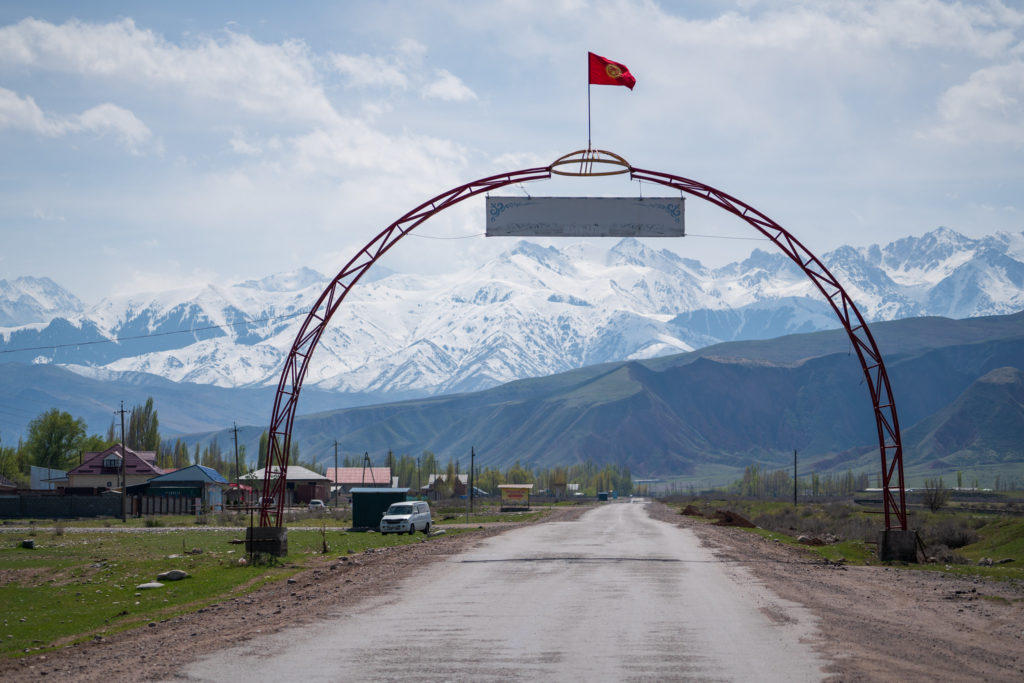
Former Soviet Might in Kazakhstan and Kyrgyzstan
Born in 1985 – my early memories kick in around first grade and coincide with the final death rattle of the Soviet Union. I distinctly recall that the early boyish doodles we’d draw of fighter planes were carefully decorated with “USA” and “USSR” and some vague sense that major global events were unfolding. At that point, the Soviet Union had already been in decline for some time, but over the following decade, things only accelerated. The wall came down, the veil was pierced, and the world discovered that the USSR was nowhere near as impressive as the rest of the world and thought and feared. The key takeaway for me – and I suspect most of my generation, particularly in Europe and the US – was of a decrepit, dysfunctional corpse of a nation.
In many ways it always seemed hard to reconcile how the Russia we were seeing could have ever been the grand empire that went head to head with the US, challenged the US on technological advancement, science, and innovation at every step of the way, and was famous for undertaking grand projects with everything from the world’s largest planes to massive infrastructure and like-kind projects.
As I got older, I also grew increasingly surprised to hear from friends or to read in articles from former Soviet countries and possessions that many members of the older generations spoke highly of the Soviet Union/Eastern Block and looked somewhat fondly back on it. How could that be? The corruption, the profound human suffering, the general oppression, and the constant dysfunction. After all – my image of Russia is of a country that, outside of a few major metropolitan areas, in many ways stopped progressing in the late 60s and has been in decline ever since.
I got my first preview of the answer to that in Georgia several years ago. Driving through the countryside, if you looked closely, you’d see grand building after grand building sitting abandoned or in extreme disrepair. Many of these were large schools, civic buildings, or factories/warehouses. It was clear, these had been thriving infrastructure during the Soviet era but now sat derelict. With an average net wage of 430 Euro/month, Georgia was just starting to find its feet as it detached from Russian influence and worked hard to purge corruption and revitalize its economy. The view and experience was vastly different from what I’d become accustomed to in Central and Eastern Europe in countries like Lithuania, the Czech Republic and Poland – in part because that pivot and ability to detach perhaps happened much earlier and due to their proximity and eventual incorporation into the West.
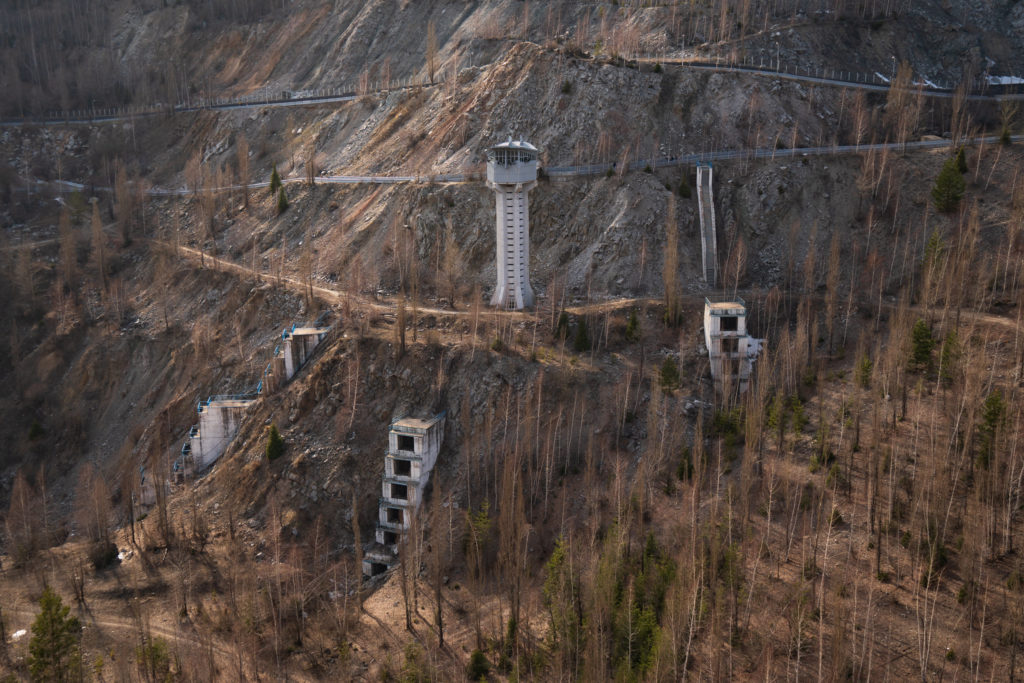
It wasn’t until this year’s visit to Kazakhstan and Kyrgyzstan though that it really started to click for me. It started outside Almaty my brother and I headed up by gondola to the ski resort just outside of the city. There we passed over what looked like a rather large, but completely empty dam. We assumed it was some derelict project that had failed, or been drained over the years but investigated a bit further. Instead? It turned out not to be the case at all. Instead, it was a novel mudflow control dam created in the 1970s to protect and save Almaty. In short, the Soviet Union’s solution to the risk of mud flows devastating the city was to not only build barriers, but to build a massive dam, that included outtakes, ring roads, and management towers with no intention of flooding it or using it as a standard reservoir, purely to protect the city.
We were impressed.
Over the next week and a half in Kazakhstan and Kyrgyzstan, we wandered, explored, and took in countries and people that were so very different than what we expected. But, as we did, and in Kyrgyzstan in particular as we drove extensively in the northeast you could see the former grandeur of the Soviet Union.
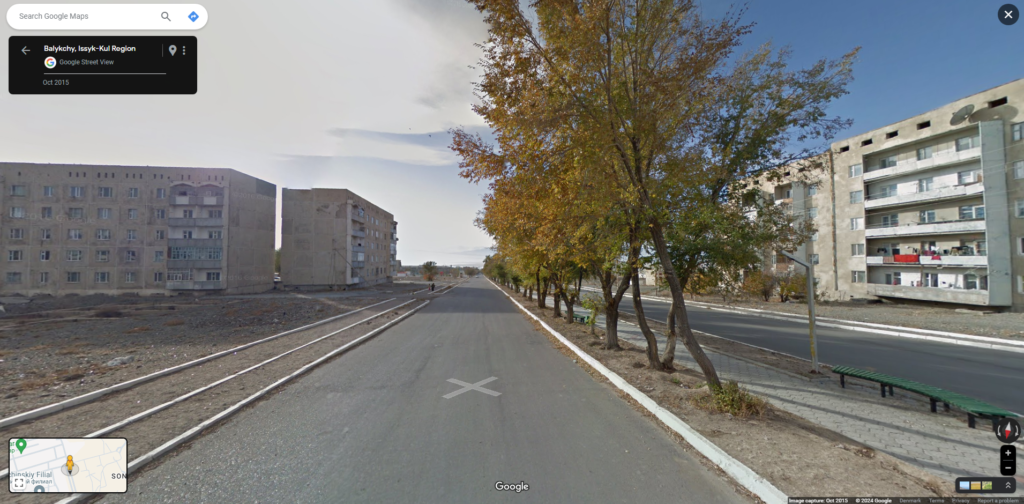
On the one hand, all of the dysfunction and decay was there. Old soviet style building blocks with cement liberally used. Cracked and ruined roads. 50-year-old bus stops reduced to crumbling ruins still barely functional.
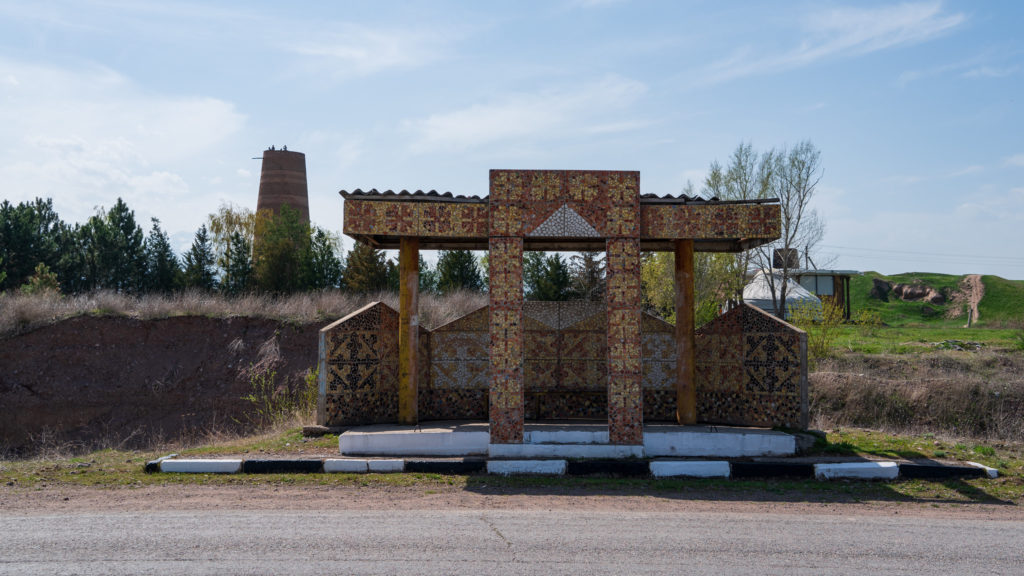
But, beneath all that – there was something very different. Here, even in remote areas, there was the constant presence of infrastructure. The bus stops serve as a prime example, as do the city signs that welcome you into each town. Here, large ornate bus stop after large ornate bus stop decorate the countryside. And, even half a century later, they are still there – still offering from the shelter – and still highlighting the creativity and investment of the time. These bus stops illustrate how the Soviet Union had gone to great expense and lengths to build roads and infrastructure to tie the country and remote regions together.
Similarly, the entry to most mid and large towns is marked by not just a simple street sign, but a dramatic piece of signage. These too have their own unique look and feel with a sense of grandeur to them. And these, too, often now boast chipped paint and an artistic style that ties them together and clearly marks each as part of a grand unifying Soviet strategy.

The same with grand boulevards – some worn down, others still boasting grand old trees – that seem out of place surrounded by the buildings that stand watch over them. In many towns and cities in the region parks with large war monuments are visible. Marked by a tank, or piece of artillery, or similar vehicle raised on a pedestal.
What we saw beneath that layer of cracked paint and crumbling cement was a hint of what must have been an absolutely incredible and exciting period of building, growth, advancement, and wild infrastructure and service expansion. I suppose it would have been a bit like how we see the growth and building projects that Dubai/the UAE and China have undertaken in recent years. Similar in the sense of innovation, the sheer level of infrastructure being created, and the catapult forward in facilities and urban services.
So, it makes sense that for some of these older individuals – they remember that period from their youth. They remember that sense of excitement, of building, and the awe of the new infrastructure being put in with a country that would move mountains. And that then, they’d look at the gradual decline these past 40+ years, the erosion of that momentum, and they’d harbor sorrow for what could have been.
All of which isn’t to say the building of those projects at the time was great for those involved. From forced resettlement to stories like the hundreds of thousands killed building projects like the road of bones / Kolyma Highway – these projects have their own terrible histories.
But, it was powerful to see the Soviet Union through the lens of what it was at its peak, and how it might have been experienced at the time. Not, as I’ve grown up thinking about it.
And what of Kazakhstan and Kyrgyzstan today?
Both are countries in exciting transition. You see it, you feel it. They find themselves in a profoundly difficult spot. Sandwiched between two hungry giants with Russia above, China below, and a turbulent group of unruly and chaotic neighbors to the south they’re up against a stacked deck. They’re deeply hungry for their own autonomy. The young people in Almaty and Bishkek are eagerly leaning into and prioritizing education, and you can see and feel that their shift and mentality is to lean forward and toward a global west.
The schools are all well painted, well maintained, and surrounded by hip coffee shops, cafes, and stand in stark contrast to the former Soviet look, feel, and energy. Almaty in particular, but equally in Bishkek and the surrounding towns you get the feeling of long-dormant countries suddenly coming awake. A bit like a steam engine, struggling mightily to get the first few revolutions completed – but clearly on track to build momentum. In many ways, they reminded me of Georgia and mirror what Vilnius or Prague likely looked and felt like in the late 90s. Granted, Almaty is also one of the long-standing commercial hubs in the region – but even at that – the are clearly investing in parks and public spaces, trash cans and city benches are freshly painted, and you feel safe walking the city.
For these reasons it was a fascinating trip and wonderful opportunity to challenge my own narratives, to get fresh insights and perspective into a slice of history and a region that I grew up knowing almost nothing about, and to discover two areas that are somewhat silently but rapidly finding their feet and entering a potentially very exciting period. One that the US and European sphere of influence sorely overlooks and misunderstands in no small part due to outdated movie depictions and disparate media universes.
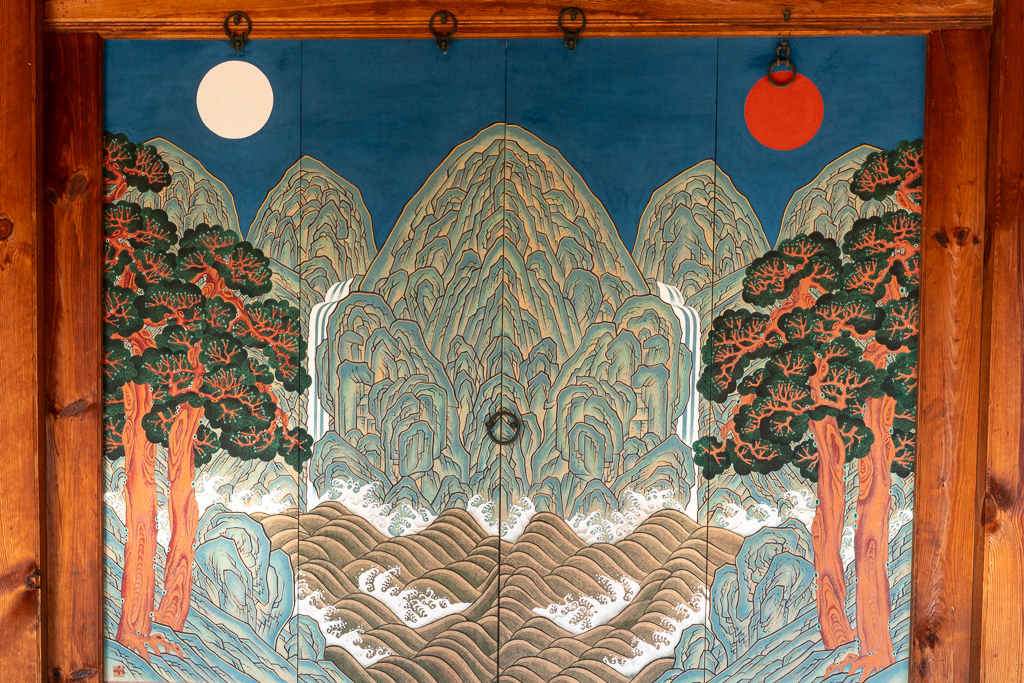
Dating, The Four Bs, and Reduced Tolerance for Bullshit
Though my dating this past year has been rather quiet. I’m perpetually fascinated by sex, relationships, politics, and religion. These days – things are in transition, and the result is fascinating. A small but vocal subset of men are throwing petulant temper tantrums over not being able to continue acting like the dregs of society. A larger group are deeply entrenched in simultaneously being upset over the loss of power, and utterly unwilling to acknowledge or navigate in a more egalitarian fashion instead defaulting to absurdities. While another subset are proving themselves exasperating to date (a category I can’t fully claim not to be partially in) through a disinterest in commitment driven in part by dating apps, FOMO, lack of relational bandwidth, competing priorities, and misaligned timeframes.
At the same time women are reacting in their own fascinating ways and the result is a knock-down drag out brawl. American women are trending significantly more liberal. As The Hill put it, “While women have been becoming more liberal for years, the change in dating culture coincides with a major uptick in young women identifying as left-leaning amid political developments such as Trump’s election, the rise of the #MeToo movement and the overturning of Roe v. Wade. Men’s politics, meanwhile, have undergone no similar shift.” Not only this, but because this shift is tied to core values around equality, equity, and respect – compromise for empowered women is not something that can be forced or extorted in the same way it was before.
To make things even more interesting, medical science has evolved to enable IVF, provide added control over reproductive cycles, and women have either for sociological or biological reasons been consistently more willing to embrace bi-sexual relationships. Layer in higher education levels, the maturation of financial security and independence, and close-knit social circles and support networks and women have functionally said – fuck it. We’ll do it on our own terms, in our own, way, at our own pace.
And it’s not just in the US. The 4B movement out of South Korea has popped up as a stark example of just how tired of the nonsense women have gotten. While I don’t claim to understand the nuance, the 4B movement clearly captures a wider trend which I think we see across much of the world.
What’s the 4B movement? Wikipedia describes it clearly as, “The 4B movement is meant to serve as a direct opposition to South Korea’s patriarchal state and combat its pro-natalist policies, which view women’s bodies and reproductive abilities as tools for the state’s future. Feminists who engage in the 4B movement are known to actively resist the various ways in which gendered expectations are enforced in a conservative society, specifically relating to child-rearing, relationships, and employment.”
And what are the 4 Bs (or NOs)? No sex with men, No child-rearing, No dating men, and No marriage with men. This comes in a country facing the evaporation of their birth rate. The most recent reproduction rate for South Korea was 0.72. Consider that in contrast to the rate of 2.1 required for maintaining population levels.
It’s a disaster and the response from young men, men in power, and older generations has only made it worse.
And I get it. The feminist ask is simple; give me equal opportunity, safety, autonomy, respect and let me decide my own course. As a man, that’s the baseline I’m used to and take for granted.
But, of course, for the Andrew Tate’s of the world, the men who find it OK to have secret second families, and folks unwilling to compete on a fair playing field – it’s a huge threat. And one they’re seething mad and threatened by. So, they act out. They try and turn feminism into a dirty word. They bombard women with abuse, and they create a hostile dating environment.
So, more and more women have simply opted out. They’ve found wonderful women to date and marry, or chosen to go the path on their own. Many have opted either eagerly or begrudgingly to skip the family and focus on pets, friends, and their career.
What comes next? It will be fun to see. Personally, I’m hopeful. In general, I see it as a continuation of the long march of progress and while it’s true that history – especially social history – tends to be more of a pendulum than I’d like. I do think we’ll continue to see this play out. A large swath of men in the middle will shrug, adapt a little, and move forward pivoting to meet women more towards the middle. A vocal subset will do what they always do and try and use regulation, threats of violence, and cultural norms to force things back the opposite direction.
Regardless – it’s a fascinating time to be single and certainly a bit scary. Though, not because I’m under some great threat as a man. Rather, because any period of transition like this takes a while to normalize, and we’ll see major societal impacts as our birth rate continues to fall and as more friction heats up between the genders.
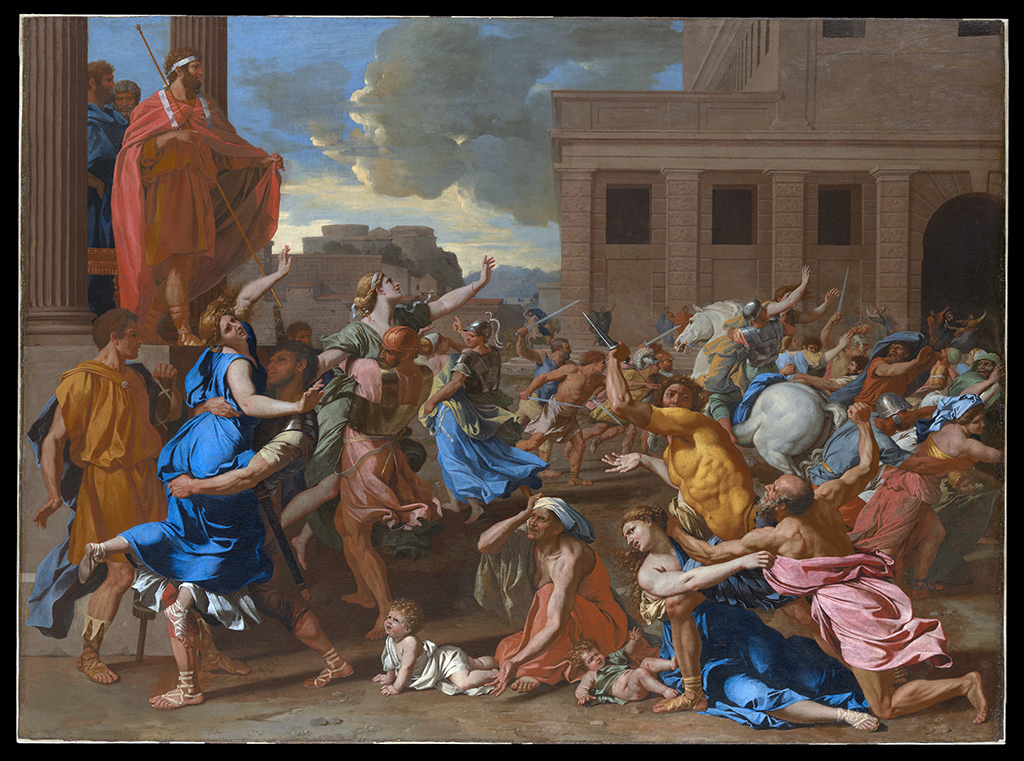
Why Don’t We Take Sexual Assault As Seriously as Terrorism?
A few weeks ago I saw a clip from the UK’s MET Police Commissioner Sir Mark Rowley. In it, he quotes a number of stats – in one year in London, the number of men who have an allegation of rape, domestic violence, child abuse, etc. is 34,000. The number of women who report sexual assault over a given year in the UK is around 800,000 + another 270,000 men (source). Meanwhile, a recent UN report found that around 89,000 women and girls were killed globally last year alone in gender-related attacks and of those about 48,800 women and girls worldwide were killed by their intimate partners or other family members. The report also notes that the #s in 2022 in the US trended up, even while declining in other parts of the Americas.
Meanwhile, some of the most recent figures I could find for the US report that there are about 460,000 cases of rape and sexual assault reported each year in the US. That seems severely underreported given the UK’s reported figure, and the size difference 67M vs. 333M between the UK and US.
And, why wouldn’t it be underreported in the US – after all, we have a former President and current Presidential candidate with 26 different allegations of sexual assault against him who is still running and two Supreme Court justices with credible sexual harassment/assault accusations in their history. Other reporting suggests that just 1 in 5 cases of Rape gets reported. Recent research also reported that in 14 states where total abortion bans have been put in place approximately 65,000 people became pregnant through rape in just those states between July 2022 and January 2024.
No matter how you slice it, to me there’s a far deeper issue than just #MeToo. Clearly, you have large numbers of individuals (predominantly but not exclusively) women who are suffering prolific levels of sexual assault/harassment/murder every year.
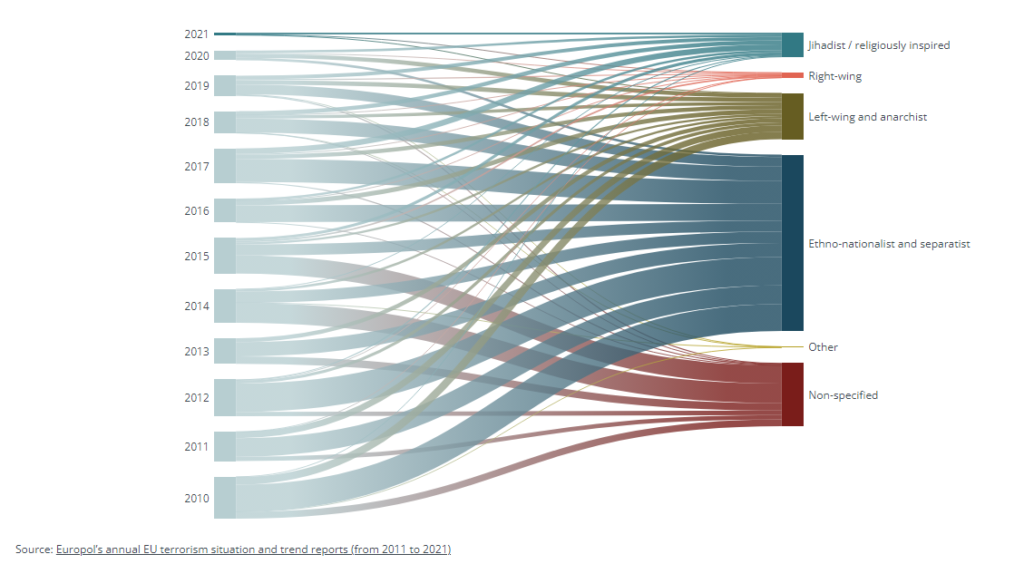
Meanwhile since 2000 (a 24 year period) we’ve had around 3,160 deaths from terrorism in the US, while Europe has had roughly 11,300 over the same period. In total between the EU and the US that’s fewer than 15,000 terrorist-related deaths in total in 20+ years.
And yet, we’ve dedicated trillions of dollars, invoked entire new government agencies, added layers upon layers of new laws and levels of enforcement and literally gone to war to respond to the threat of Terrorism. We’ve even re-designed our airports, changed our cities including installing barriers and additional measures, added cameras, and much more.
At the same time, we’ve wrung our hands, and been utterly unwilling to make a dramatic shift and to bring that same level of policy and enforcement to bear on a far more dangerous, far more prolific threat to our society. And there, I suspect it’s in part because we’ve framed it wrong. On top of a deeply sexist approach that is only periodically apologetic for much of this abuse, we talk about crimes of passion or dismiss vile conduct as an unavoidable biologically fueled inconvenience. It’s such an astronomically disconnected pile of bullshit it’s staggering. You’d never apply the same logic and narratives to terrorism, theft, or crime in other contexts.
So, moving forward, I’m inclined to call it what it is and support approaching it in the same way. It is terrorism. Pure and simple. It is about power, it is about violence, and it is about inflicting malicious harm. Talking about it as a form or terrorism in no way diminishes the existing terrorist threat.

Private Equity: Re-defining the Purpose of Jobs
There’s an interesting generational difference in how people see the role of a job, and I don’t think it’s something widely recognized or that most pick up on – I know I certainly didn’t.
Pause and ask yourself – what’s the role of a job in wealth creation? And, by extension, how does that map to your eventual savings for retirement?
You probably settled on some approximation of one of two narratives.
The first – you work a job or jobs, that wage enables you to buy your house, and puts money away in savings via a retirement pension which you’ll eventually use to retire. You may then take some of the surplus money and use that for investments to supplement and enhance your standard of living and unlock additional socio-economic mobility. In summary; your job covers your needs at all stages of life through retirement and more isn’t needed.
The second – you work a job or jobs to cover your expenses, while you get the seed capital, to invest in the stock market or other investments, which are the essential tool to help you make enough additional money to have a retirement pension and/or make investments such as in a house. You’ll use the money you make on investments to maintain or enable your current standard of living with the longshot hope of some additional socio-economic mobility. In summary; your job lets you barely get by and meet core needs. But meeting debt obligations, saving for real estate, and retirement are all dependent on additional income generation and the speculative stock market is the channel for that.
To put the two even more simply; In the first, you could be successful, support a family, and retire purely off of a salaried role. In the second, it is a given that you’ll need a combination of salaried role + stock market infusion to get by.
For the older generations, a job delivered enough capital to support and secure or improve their standard of living without the need for supplementation. This largely also meant keeping up with inflation. If you wanted to buy your house, you worked your job and enough of that wage was left over to cover the family, pay into retirement, and invest in purchasing your home. The job and the salary it generated was sufficient to enable both.
Then the systemic changes in the 70s and 80s came along – driven in part by private equity and venture capital. The 1980s saw a massive re-distribution of wealth, and a new approach to how businesses operate, how profits are shared, and how stock prices were valued. Topics like a healthy P/E ratio stopped being key considerations and the role of dividends and executive compensation all got turned upside down.
In effect, an entire new layer was inserted into the existing structure and that new layer extracted and re-directed an enormous amount of wealth. Since then, it has reshaped how the stock market functions, the behavior of public and private companies alike, wealth concentrations, and business lifecycles. It has also simultaneously re-directed large amounts of that wealth into more concentrated pockets. Over time these financial firms have made new investments and spread into additional aspects of society, reshaping them as they go. Today, BlackRock alone claims some $10 trillion in assets under management. For the past 20 years, speculative investment has also driven a surge in companies able to scale to multi-billion dollar valuations despite little to no profitability.
Meanwhile, the investment climate itself has evolved significantly from before the 1980s. Steady profitability is only just starting to return as a priority, while reliable dividends are rarely talked about for the average investor and have now been banished more to the realm of older generations or high-net-worth individuals with large stock portfolios.
All of this has functionally reallocated massive amounts of money out of the reach of regular hourly and salaried employees and functionally diluted the benefit and impact of that salary. At the same time, they’re facing significant expansions in debt – often facing debt comparable to a down payment (or the full price) of a new home right out of the gate due to how the education system and degree requirements have been re-engineered. A relatively small subset of highly skilled or highly compensated technical workers manage to bypass these challenges and leapfrog their way forward. But, the vast majority get left behind.
This then manifests in a breach between the way we talk culturally about the role of your job, what it should enable, and how it plays a pivotal role – especially in your first 10-15 years of income generation. This stands out in stark contrast with the actual role of that job for the average individual under 45.
I think this divide goes a long way to explaining a lot of friction between the generations around their relationships with savings, their employers, and investing. It also helps to explain the huge divide in how employment, debt, and ownership of assets are viewed between those 60+ and those under 40. Ultimately we’re talking about two vastly different systems and rulesets.
My suspicion is that as more and more people become aware of this divide, and the pressure that the value extraction in the middle is creating – we’ll see a pivot in people’s sentiment toward the stock market, and large investment funds. At what point do people become uncomfortable with largescale losses across major pension funds, wildly unbalanced CEO pay that’s historically unprecedented, and a level of profit-taking that undercuts the ability to invest in basics like education, healthcare, and infrastructure. Unfortunately, it seems that the guiderails came off these otherwise extremely positive vehicles for innovation, growth, and competition and the end result has been a bit like a fish without self-control that eats itself to death.
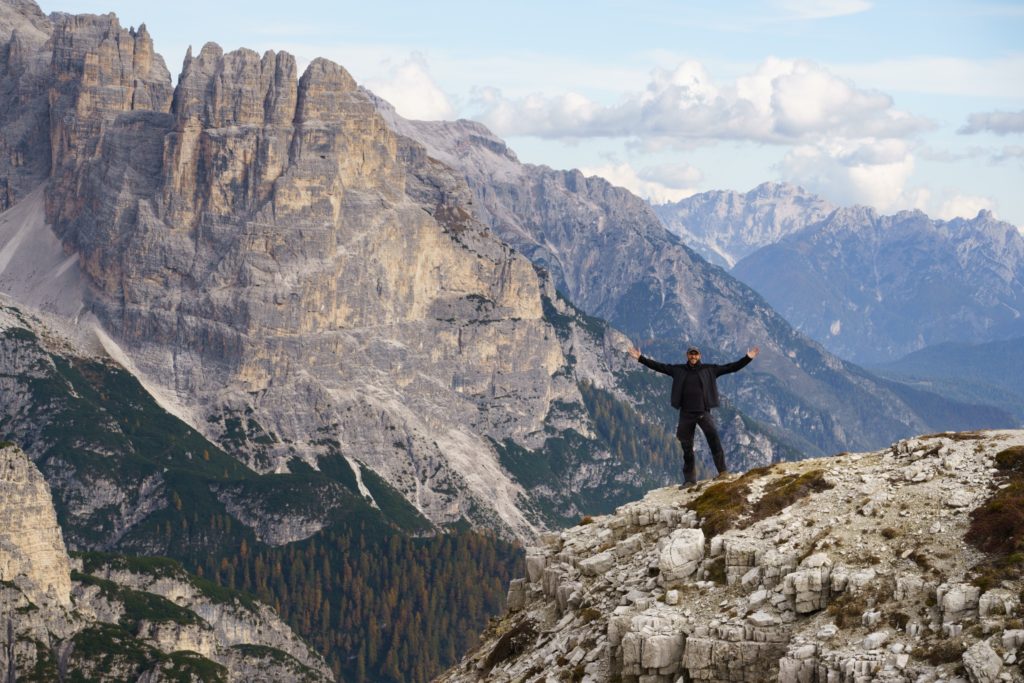
Final Thoughts
Just like that another year has come and gone. As always, thank you all for joining me on this adventure. I’m so grateful for the people that inspire me, that support me, that challenge me, and that nourish me with the investment of time, interest and curiosity.
I really have no idea what the year ahead will bring. I invested in an upgraded camera in January and cannot wait to run it through its paces, and to see what it unlocks. I’m still working on my Top 100 color / black and white photos for 2023 posts and cannot wait to share some of the highlights with you.
Hopefully 39 will see me finally move from the research and search phase to buying a property here in Copenhagen. That alone would unlock new challenges in decorating, maintenance, upgrades, and home ownership.
I expect it will bring more travels, hopefully new countries, and exciting new opportunities to grow. It’s also a year where I expect and hope to invest more time in interpersonal, social, and relationships – but, let’s see what work and related challenges have in store for me.
As always, if there’s some part of this post that really resonated with you or you found really engaged your thinking – reach out, and let me know.
